#cows of kalevala
Text
Cow Names in "The Kalevala", a 19th-century work of epic poetry compiled by Elias Lönnrot from Karelian and Finnish oral folklore and mythology. The suffix -kki was common in cow names.
Apple (Omena), poem 32
Blackie (Muurikki), poems 1, 11; a black cow
Brandle (Kirjas)
Brindle (Kirjos), poem 32; a brindle or streaked cow.
Eater (Syötikki), poem 32; a cow that eats lots of fodder.
Drinker (Juotikki), poem 32; a cow that drinks a lot of water.
Freshness (Tuorikki), poem 32; a cow yielding an abundance of milk.
Frisky (Kimmo), poem 1; a frisky, lively cow.
Strawberry (Mansikki), poem 11
Stringy (Hermikki), poem 32; a lean cow with sinews showing
Sweetie (Mairikki), poem 32
Teenie (Pienikki), poem 32
Whortleberry (Puolukka), poem 11
#booklr#folklore#cows#cowstagram#cow names#just random stuff#in the glossary amongst deities and locations were cow names#mythology#finnish#kalevala#cowblr#cattle#literature
42 notes
·
View notes
Text
i am still laying here haunted by robert macfarlane drawing comparisons between containment measures for nuclear waste and dire warnings to future people to stay away, and a classic finnish myth about a man descending deep underground to claim a cool secret power treasure despite tons of warnings about how dangerous and bad it would be.
fucking chills.
I read the Kalevala for two hours in view of that photograph, and as I read I come to realize something so unsettling that the back of my neck prickles: despite its great age, the poem seems to possess foreknowledge of what is presently being undertaken
on Olkiluoto Island.
Partway through the poem, Väinämöinen is given the task of descending to the underland. Hidden in the Finnish forests, he is told, is the entrance to a tunnel that leads to a cavern far underground. In that cavern are stored materials of huge energy:
spells and enchantments which, when spoken, will release great power. To approach this subterranean space safely Väinämöinen must protect himself with shoes of copper and a shirt of iron, lest he be damaged by what it contains. Ilmarinen forges them for him. Clad in these insulating metals Väinämöinen approaches the tunnel mouth, which is disguised by aspens, alders, willows and spruce. He cuts down the trees to reveal the entrance. He enters the tunnel and finds himself in a deep ‘grave’ a ‘demon . . . lair’. He has stepped, he realizes, into the throat of a buried giant called
Vipunen whose body is the land itself.
Vipunen warns Väinämöinen not to bring to the surface what is buried in his caverns. He speaks of the ‘grievous pain’ of excavation. 'Why have you entered ‘my guiltless heart, my blameless belly’, Vipunen asks, ‘to eat and to gnaw / to bite, to devour’? He warns Väinämöinen that he will end up visiting terrible violence upon humans if he continues on his course, that he will become ‘a windborne disease / wind-borne, water driven / shared out by the gale / carried by chill air’. He threatens to imprison Väinämöinen by means of a containment spell so powerful that it is
unlikely ever to be broken. It will take nine ram lambs born of a single ewe, together with nine bull oxen born of a single cow, together with nine stallions born of a single mare, pulling together to free him.
But Väinämöinen will not listen to Vipunen. He sings of his conviction that the power buried underground should be returned to the surface:
Words shall not be hid
nor spells be buried;
might shall not sink underground
though the mighty go.
The Kalevala is fascinated by the underland; by the safe storage of dangerous materials and the safe retrieval of precious materials. At the poem’s heart is a magical object or substance known as ‘Sampo’ or the ‘Sammas’; constructed by the blacksmith
Ilmarinen, another of the Kalevala’s supernatural heroes, and stored inside the ‘copper slope’ of a ‘rocky hill’, protected by a gate with ten locks. This enchanted artefact, most often figured as a mill or quern, brings power, wealth and fortune to whoever controls it. It is – in modern terms – a weapons system, a rich raw resource,
a nation’s organized industry, or a nuclear power station. The Sampo grinds out flour, it grinds out money – and it grinds out time. One of its given tasks is to grind out the age of the world, causing epochs to yield to one another in an immense cycle of
precessions. The world has changed too much . . . we are in the Anthropocene.
4 notes
·
View notes
Text
List of the characters in Kalevala
By popular demand (haha what a joke there was no demand for this post, it’s just a dream of mine to some day use that phrase) here’s a list of the characters of Kalevala, organised by place of residence. This time also provided to you in alphabetical order because well, only the best for my readers. Oh and there’s also a list of the cows of Kalevala. Enjoy!
Kalevala / Karjala / Väinölä
Aino ∞ sister to Joukahainen, betrothed to Väinämöinen but instead of marrying him she drowns herself and become’s a Vellamon neiti, maiden of water
Ainikki ∞ sister to Lemminkäinen
Annikki ∞ sister to Ilmarinen
Ilmarinen ∞ a skilled smith who forges the Sampo, marries Pohjan neiti and after losing her forges the silver bride and later the lights of sky
Joukahainen ∞ skinny boy from Lapland who loses to Väinämöinen in poem singing and promises his sister Aino to Väinämöinen just to spare his own life
Kalervo ∞ father of Kullervo, brother to Untamo
Kalervon impi ∞ mother of Kullervo, Kalervo’s wife
Kullervo ∞ a youngling raised in slavery, seduces his own sister by accident (she kills herself after realising this), takes revenge on Untamo, loses his parents and ends up taking his own life
Kyllikki / Kylli ∞ a beautiful maiden, stolen by Lemminkäinen to be his wife, she agrees to be married to Lemminkäinen but eventually breaks her vows
Lemminkäinen / Ahti Saarelainen / Kauko ∞ a warrior, ladies man, quarrelsome, but also a skilled noita, a witch, who has a tight bond with his mother
Lemminkäisen äiti ∞ mother of Lemminkäinen, a renown healer, who repeatedly tries to stop her son from his often too daring endeavours
Lokka / Kalevatar ∞ mother of Ilmarinen
Lyylikki / Kauppi ∞ a ski maker
Marjatta ∞ a fair maiden who gets impregnated from eating a lingonberry, gives birth to a son; the boy goes lost but she manages to find him with help from taivaanvalot, lights of the sky
Marjatan poika / Karjalan kuningas ∞ son of Marjatta, whom Väinämöinen wants to condemn to death, but who then starts to speak of Väinämöinen’s past sins and is then known as the king of Karjala (he is a symbol for Christianity)
Ruotus / Sarajas & Ruotuksen emäntä ∞ owners of the house from where Marjatta seeks help for her birth (Ruotus is derived from biblical Herodes)
Tiera / Kuura ∞ “friend” of Lemminkäinen during the war to Pohjola
Untamo / Unto ∞ brother of Kalervo, who is told to have killed Kalervo and his family, only keeping Kullervo as his slave; he sells Kullervo to Ilmarinen but eventually ends up being killed by Kullervo
Väinämöinen / Väinö / Suvantolainen ∞ old wise man, a shaman, who has his part in the creation of the world, makes trips to the realm of the dead, invents the kantele; has poor luck with women, children and stealing the Sampo, but his kantele playing has the ability to charm every being present
Pohjola / Sariola
Louhi / Pohjan akka / Ilpotar ∞ the ruler of Pohjola, a fierce noita, a witch, she has the power to transform into the eagle Kokko; she has daughters who the men from Kalevala often come to ask for marriage
Märkähattu ∞ a blind old shepherd, whom Lemminkäinen accuses of incest and bestiality and who then kills Lemminkäinen
Pohjolan tyttäret ∞ the daughters of Louhi, amount unclear, probably 3
Louhen tytär / Ilmarin emäntä ∞ daughter of Louhi, wanted among many Kalevalan men, ends up being married to Ilmarinen after he forges the Sampo; she is killed by Kullervo after which Ilmarinen goes to ask for another of Louhi’s daughters to marry
Pohjan neito ∞ a girl who lived in Pohjola whom Väinämöinen tried to lure to be his wife, most likely one of Louhi’s daughters
Pohjolan isäntä ∞ lord of Pohjola, a skilled spellweaver who ends up getting killed by Lemmnikäinen
Ukko uunin päällä ∞ a gaffer living in Pohjola who recites the birth words of ale, gives words of advice to a husband-to-be and helps Väinämöinen to cure a wound
Tuonela
Antero Vipunen / Untamo ∞ a shaman who holds great knowledge and has passed to the realm of the dead
Loviatar ∞ she gave birth to the worst of diseases
Tuonen akka, ukko & poika ∞ the lady, lord and son of the realm of the dead who weave a web of iron and cast it to the river of Tuonela to stop Väinämöinen from leaving their lands
Tuonen tytti / Tuonen neito ∞ daughter of Tuoni who does laundry by the shores of the river of Tuonela (see also Kiputyttö)
Tuonetar ∞ the matron of Tuonela
Tuoni ∞ personified death, ruler of Tuonela
Deities
Aallotar ∞ a female spirit of water
Ahto / Veden isäntä ∞ king of waves, ruler of the realm of waters; known as other folklore as Ahti
Akka aaltojen alainen ∞ a female haltija, guardian spirit, of rapids (see also Kosken tyttö)
Akka manteren alainen / Mannun eukko ∞ goddess of earth; appears in spell-poems
Etelätär / Suvetar ∞ a female haltija of springtime; appears especially in spells of protecting cattle
Hiisi / Juutas, Juuttaat ∞ mythical evil being, a synonym for bad things; also meant a place, usually a bad and probably dangerous place
Hiiden hevonen ∞ Hiisi’s horse; appears in spell-poems
Hiiden hirvi ∞ Hiisi’s mythical moose who Lemminkäinen sets to hunt
Hongatar ∞ goddess spirit
Humala / Remusen poika ∞ personified hop (humulus lupulus)
Iku-Turso ∞ a terrifying sea monster who Louhi conjures out of the waves, but whom Väinämöinen speaks over to fall back into the depths
Ilman impi / Ilmatar ∞ the oldest air spirit, she is the mother of Väinämöinen
Kaleva / Osmo ∞ the mythical ancestor of all people of Kalevala
Kalevatar ∞ helper of creating beer
Kalma / Surma ∞ personification of death (the act of dying itself, not same as Tuoni)
Katajatar ∞ goddess spirit
Kave eukko ∞ mythical nature spirit, appears in spell-poems
Kiputyttö / Kivutar / Vammatar ∞ appears in healing spell-poems
Kivi-Kimmo, Kammon poika ∞ guardian spirit of rocks, who Lemminkäinen asks to set aside the foam of water from the way of boatmen
Kosken tyttö / Kuohuneiti / Neiti kosken-korvallinen ∞ guardian spirit of rapids
Kuuhut ∞ personified moon
Kuutar / Otavatar / Päivätär / Tähetär ∞ goddess spirit of fabric weaving and moonlight
Lempo ∞ a being(?) associated with Hiisi and other evil things; often used as an insulting word
Luonnottaret ∞ nature goddesses; three of them gave birth to iron, three gave birth to snakes
Melatar ∞ a spirit associated with rowing
Metsän piika ∞ a forest spirit (see also Tapion neiti)
Mielikki / Mimerkki ∞ matron goddess of forest
Nyyrikki ∞ son of Tapio, who grants luck in hunting- and herding spells
Osmotar / Kapo kaljojen tekijä ∞ guardian spirit of ale, gives advice to a bride
Otsonen ∞ godly figure of forest; appears in bear-hunting spell-poems
Pihlajatar ∞ goddess spirit
Päivä / Päivyt / Tähti ∞ personified natural force
Päivän poika ∞ son of the Sun, releases a spark of fire from the stomach of a pike
Sampsa Pellervoinen ∞ mythical character; appears in poems about fields, cultivation and cutting down trees
Siniviitta ∞ a mythical forest spirit, who tells Kullervo in the woods that his family is alive, contrary to what Kullervo had believed (see also Ajattaret)
Sotkottaret ∞ water maidens of a kind, who inhabit the shores and are filled with awe by the sound of Väinämöinen’s kantele playing
Suonetar ∞ a goddess spirit; appears in healing (stitching a wound, mending broken bones, surgical operations) poems
Syöjätär ∞ a spirit who had to do with the birth of snakes
Tapio ∞ ruler and god of forest
Tapion neiti ∞ a female spirit residing in the forest
Tellervo ∞ possibly wife to Tapio, goddess spirit of the forest, protector of cattle in forest
Terhenetär / Uutar / Udutar ∞ guardian spirit of mist and fog
Tuometar ∞ goddess spirit
Tursas ∞ a being who rose from the waters to grant the perfect soil for the first oak to grow on
Tuulikki ∞ daughter of Tapio, goddess spirit of forest
Ukko ∞ the high god, commander of weather
Veden emäntä / Vellamo ∞ goddess of water
Veen emonen ∞ Ilmatar after she descended from the skies and laid on the water
Cows
What? You’re not into cows? Well too bad, I’m listing them anyway!
Hermikki ∞ Ilmarinen’s cow
Kimmo ∞ a cow
Kyyttä ∞ Ilmarinen’s cow
Mairikki ∞ Ilmarinen’s cow
Mansikkinen ∞ Lemminkäinen’s cow
Muurikki ∞ a cow
Muurikkinen ∞ Lemminkäinen’s cow
Omena ∞ Ilmarinen’s cow
Pienikki ∞ Ilmarinen’s cow
Puolukka ∞ Lemminkäinen’s cow
Tuorikki ∞ Ilmarinen’s cow
118 notes
·
View notes
Text
A Banishment of Disease
If you’re a wind-borne disease, wind-borne, water-driven, shared out by the gale, carried by chill air, go by the wind’s way, by the gale’s sledge track, without sitting in a tree, or resting in an alder to a copper slope’s summit, a coppery peak, there to be lulled by the wind cared for by the gale! If you’ve come from heaven, from the furthest fair-weather clouds, rise again to heaven, go up there into the sky, to the drizzling clouds, to the trembling stars, to smoulder as fire, to sparkle as sparks, where the sun drives, where the moon-ring revolves! Should you, weakling, have been drawn by water, by billows driven, weakling, enter the water and drive below the billows to the mud-stronghold’s edges, the water-ridge’s shoulders, there to be driven by the billows, tossed by the gloomy water! Should you be from the grave’s heath, the abodes of ever-gone, try hard to get home to those farmyards of the grave, to the crumbling soils, earth being disturbed in which people have fallen, strong folk have toppled! If, evil one, you have come from a forest demon’s lair, from hideouts of pine, from lodges of fir, that is where I banish you— to the forest demon’s lair, the lodges of fir, the hideouts of pine, that you may stay there, until the floors rot, and the wall beams grow mushrooms, and the roof comes tumbling down.
There, I banish you there, wretch, I compel you— to gaffer bruin’s home, to gammer bear’s farm, to marshy hollows upon unthawed swamps, into moving mires, into spilling springs, into pools that are fishless, quite perchless. Should you not get a place there yonder I will banish you— to the furthest North, to Lapland’s vastness, to the barren glades, to the unsown lands, where there is no moon, no sun, nor daylight for evermore. You will enjoy being there, you will love it flitting there: elk have been hung up on trees, the kings of beasts overcome for a hungry man to eat, for one who wants it to bite. There I banish you, there tell and compel you—to Rutja’s steep rapid, the smoking whirlpool into which trees fall headlong, pines roll root and branch, the great firs base first plunging, the shock-headed pines top first: swim there, bad heathen in the rapid’s steep foaming, in the wide waters swirl round, in the narrow waters dwell!
Should you not get a place there yonder I will banish you— to Tuoni’s black river, to the Dead Land’s eternal brook from where you’ll never get out, never in this world be free, unless I get to letting you out, get round to unloosing you, with nine wethers, born of a single ewe, with nine oxen, calves of a single cow, with nine stallions, foals of a single mare. If you should ask for a lift, beg for draught horses—oh, yes I’ll arrange a lift for you and I’ll give you a draught horse: the Demon has a good horse, one with red hair on a fell, whose muzzle flashed fire, its snout flame indeed, all its hoofs are of iron, its haulers of steel; they can go uphill, raise a hollow to a bank, with a good man at the reins, with a strict driver. Should not enough come of that, get the Demon’s skiing-things, the Devil’s alder snowshoes, the evil one’s thick ski-stick, to ski on the Demon’s lands, and to roam the Devil’s groves, hopping on the Demon’s lands, skipping on the evil one’s! A rock lies across the road: let it smash to bits; a log lies along the road: let this snap in two; a fellow stands in the road: send him to one side!
Go now, idler, on your feet, evil man, get a move on before the day breaks, and the dawn god dawns, and the sun comes up and the cockcrow sounds!
Excerpt from The Kalevala (Oxford World’s Classics edition) by Elias Lönnrot
60 notes
·
View notes
Text
maybe it's about how the edda says "more blest are the living than the lifeless, 'tis the living who come by the cow", and the odyssey says "I'd rather slave on earth than rule over the breathless dead", and gilgamesh says "although I should go in sorrow and in pain, with sighing and with weeping, still I must go" and sinuhe says "my throat burned and I said this is the taste of death, then lifted my heart and gathered my body again" and dante begins with "midway upon the journey of our life I found myself within a forest dark" and Job ignores his wife's instruction to "curse God and die" and the Kalevala says "even a harp might be constructed of the bones of fishes" and Ovid ends audacious on "vivam."
5 notes
·
View notes
Photo

Currently finding myself working on a rather comprehensive article about the Kalevala, a Finnish epic collected, written and published by Elias Lönnrot in 1835. Kullervo is the protagonist of a rather freestanding part of Kalevala, whose story inspired professor J.R.R. Tolkien when writing the character Túrin Turambar in his posthumous The Children of Húrin (2007). The article might take some time, so here is an appetizer.
The story goes, Kullervo's grandfather Kalervo is killed by his brother Untamo, along with his entire family. Kalervo's pregnant daughter-in-law is the only one whom is spared, and she is brought to Untamos household, where she gives birth to Kullervo. After Untamo fails to kill Kullervo, the boy is sold as a slave to the smith Ilmarinen. Ilmarinen's wife harasses the boy, putting, among other things, rocks in his bread while he is out herding cows. Upset by the insult - and that the knife he inherited from his father is broken – Kullervo chases the cows in the marsh and sends a flock of bears and wolves back to the farm. Ilmarinen's wife is bewitched into believing that the predators are the cows, and she is torn asunder when she tries to milk them.
Kullervo returns to his family, who prove not to be dead anyway, and while he's out on an errand for his father, he meets a girl he seduces. The following day it dawns on him that she is his sister. She takes her own life by throwing herself in the waterfall. He travels out to avenge himself at Untamo, killing him and burning down the farm. He returns to his home, only to find his own family slaughtered. He brings along his dog, goes back to where he seduced his sister, and kills himself with his sword.
🖼️ Akseli Gallen-Kallela, Kullervo's curse, 1899
84 notes
·
View notes
Text
Speaking of Lönnrot, I'm involved in this poetry festival, and next year's theme is translation of poetry and i desperately want to include some kind of "lets acknowledge that the Kalevala is Karelian language poemsingers' work translated into Finnish" but... another way to say that is "lets slaughter the sacred cow of Finnish literature" because Finns do not want to admit that Karelian is a different language and a different people.
2 notes
·
View notes
Text
i was tagged by @kettukuiskaaja
tag 10 people that last reblogged from you
tagging: @jaanaeveliina @daredevlings @kultsipippeli @naakkaankka @w-ilhelmiina @riisi-vitun-nuudeli @pokka-mursu @sarkastinensaatana @karmistuttava @pikimusta
Height: 172 cm
Relationship Status: engaged
Where I live: finland
Time: 20:07
Followers: 576
Following: 843
Favorite Season: autumn
Favorite Fruit: apple
Favorite Flower: Trientalis europaea
Favorite Animal: cow/cat
Favorite Instrument: piano
Favorite Scent: vanilla
Favorite Colors: black, red, lilac
3 Favorite Foods: lasagne, smoked salmon and tortillas
Favorite Fictional Character: Chromedome
Coffee/Tea/Hot Chocolate:coffee
Average Hours of Sleep: 5-7h
Cats or Dogs: cats
Dream Trips: canada, united kingdom, irland, mexico...japan
# of Blankets I Sleep With: 1
Lipstick or Chapstick: none
Song Stuck In My Head: stay frosty royal milk tea
Last Song I Listened To: necromancin dancin by bear ghost
Last Movie I Watched: guardians of the galaxy 2
Top 3 TV Shows: brooklyn 99, bones anddddd ??
Books I’m Currently Reading: Kalevala
Last Thing I Googled: deep-sea fish
6 notes
·
View notes
Text

EDIT: I don’t know if it’s just me, but the pictures in this post didn’t seem to be working properly on the mobile app at first. If the pictures are all over the place and don’t seem to be getting back to normal, you might have better luck trying the web page version!
So, in case no one noticed, I haven’t made a post in a looong time. That is due to a combination of a crappy computer, lack of time and also a bit of laziness. Originally I wanted to make this post the first post on the blog, but that didn’t end up happening. While trying to answer one sports-related ask I, seeing as the post was taking forever since I had to do a lot of research and on top of that, I had to write in proper sentences, I decided it would probably be for the best to make a quick post, a list perhaps, of some basic things about Finland. So I did. It’s this post. The reason it has taken me so long to get this done is that originally I also had a history portion, but it ended up making the post too long. I then decided it would be better to make that into its own post, so I settled on making a condensed version on this one.
Turns out, condensing 800 years of history into one post and keeping it at a reasonable length is not such an easy task. Huh, who would’ve thought? That means that you’ll be getting THREE separate posts about general Finnish history! Awesome right?
Anyway, this is not that post. This is just some basic stuff, and pictures. So, without further ado:
Some basic things about Finland
Name of the country: Suomen tasavalta (the Republic of Finland)
Location: Fennoscandia (not Scandinavia!!), Northern Europe

Edit made by me (as you can see from the top notch quality), but the map is from here
Neighboring countries: Norway to the north, Sweden to the west, Estonia to the south on the other side of the Gulf of Finland, Russia to the east.
Official languages: Finnish and Swedish (technically Finland Swedish)
Minority languages (mentioned in the law): Karelian, Northern Sami, Skolt Sami, Inari Sami, Finnish Romani, Finnish Sign Language and Finland Swedish Sign Language.
Languages with the most speakers:
1st: Finnish (4 865 628 people/88,7% of total population[as of 2015])
2nd: Swedish (290 161/5,3%[2015])
3rd: Russian (~75 000[as of March of 2017, same with the ones below])
4th: Estonian (~49 500)
5th: Arabic (~21 700)
6th: Somali (~19 000)
7th: English (~18 500)
President: Sauli Niinistö, 12th president of Finland. in 2018 there’ll be a new presidential election, but he’s running for president again, and there’s quite a good chance he’ll get elected again.
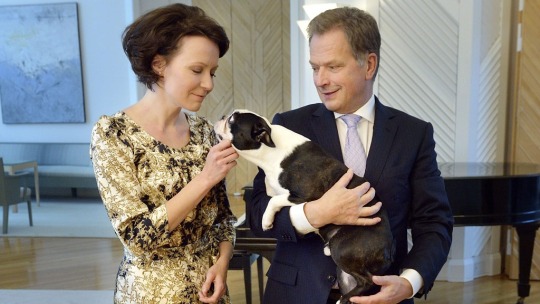
Here’s our current president with his wife Jenni Haukio and their dog, Lennu, the first dog of Finland.
Currency: Euro since 2002. From 1860 until 2002 Finland had it’s own currency, markka. 1 euro is approximately 6 markkas.

Population: 5 503 297 as of 2016
Population density: 16/km2
Size:
Area: 338 424 km2
Length: ~ 1 200 km
Width: ~ 550 km
Number of lakes: 187 888
Number of islands: 179 584
Religion:
72,0 % Evangelical Lutheran
1,1 % Orthodox Christian
1,6 % other
25,3 % none
Important holidays:
Vappu 1.5.
Juhannus 20.6.-26.6. on a Saturday
Itsenäisyyspäivä (Independence day) 6.12.
Joulu (Christmas) 24.12. is celebrated more than 25.12.
Uudenvuodenaatto (New Year’s eve) 31.12.
Other holidays:
Laskiainen (Shrove Tuesday) Seven weeks before Easter.
Pyhäinmiestenpäivä (All Saints’ Day) 31.10.-6.11. on a Saturday, NOT Halloween, we don’t celebrate it here.
Pääsiäinen (Easter) The same time it’s celebrated elsewhere.
Ruotsalaisuuden päivä (Finnish Swedish Heritage Day) 6.11.
Äitienpäivä (Mother’s day) Celebrated on the second Sunday of May.
Isänpäivä (Father’s day) Celebrated on the second Sunday of November, exactly half a year after Mother’s day.
Can you drink the tap water: Yes.
Number of saunas: 2 million - 3,2 million
Number of dogs: around 500 000 pure breeds, mixed breeds not included
Finland’s national
...anthem: Maamme, Vårt land in Swedish, Our Land in English. Composed by Fredrik Pacius, words written (first in Swedish) by J. L. Runeberg. It was performed for the first time in 1846. The Finnish translation is what made it become the national anthem, even though for a long time Finnish wasn’t even an official language in Finland.
...flag: A blue Nordic cross on a white background, the State flag also has the Coat of Arms of Finland in the middle.
...Coat of Arms: A golden crowned lion on a red background, standing on it’s hind legs, with it’s other armored front leg holding a sword, trampling a saber, with nine silver roses just kinda floating around. See for yourself.

...day: 6th of December, our Independence day.
...epic: Kalevala, published in 1835, made by Elias Lönnrot, who collected old poems and songs from Karjala (Karelia) and compiled them into one book. Kalevala has inspired many artists in Finland and abroad, one example being J.R.R. Tolkien. Kalevala has been translated into 61 languages, so you can probably give it a read if you’d like. (source)
...instrument: Kantele. (source)
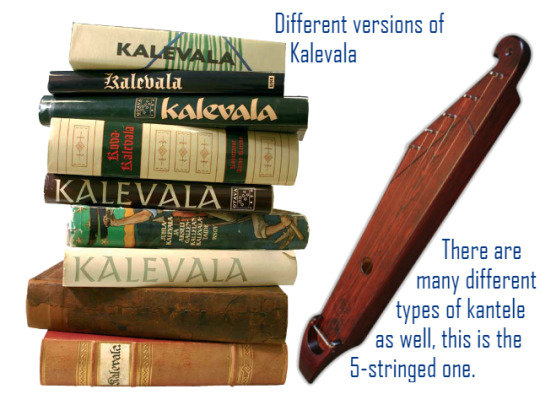
...personification: Suomi-neito, the Finnish Maiden. Yes, we have an official personification as well.
...animal: A bear. It was a holy animal in Finnish paganism, so much so that it was forbidden to say its name out loud. To this day, we don’t know what the real, original word for bear in Finnish was. It had a lot of names that were used instead. The word we use today, karhu, comes from the word “karhea”, which means like, rough? It’s because of the texture of the bear’s fur. (source)
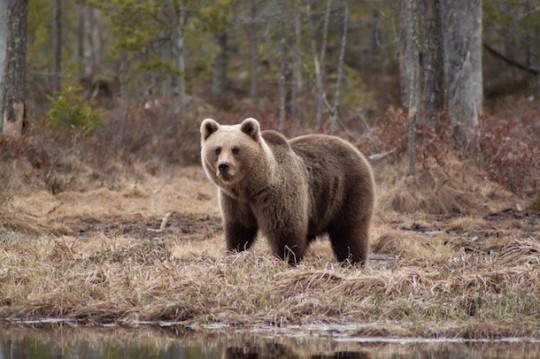
...fish: Ahven, European perch. Beautiful, isn’t it? (source)
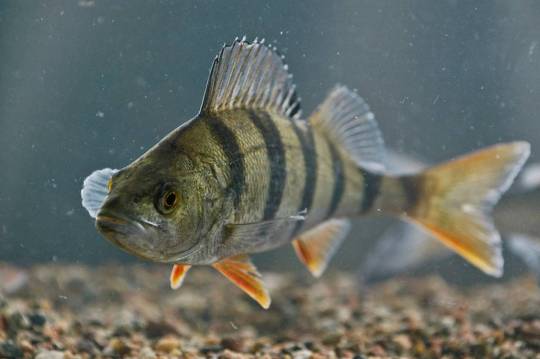
....bird: Laulujoutsen, which is by the way a much prettier name than whooper swan (sorry English). Laulujoutsen literally means “song swan”. (source)

...bug: Leppäkerttu, a ladybug. Funny thing, you know how it’s called like a God’s cow in some languages? Well, the Finnish name, leppäkerttu OR the more specific species seitsenpistepirkko, are literally translated as “alder-Kerttu” and “seven-dotted- Pirkko”, Kerttu and Pirkko being Finnish names for women. What a weird name. ALSO, one of the gods pagan Finns worshipped was called Ukko, and it is commonly believed that he was the highest of all the Finnish gods. A ladybug, back then, was called ukonlehmä. You know what that means? Ukko’s cow. (source)
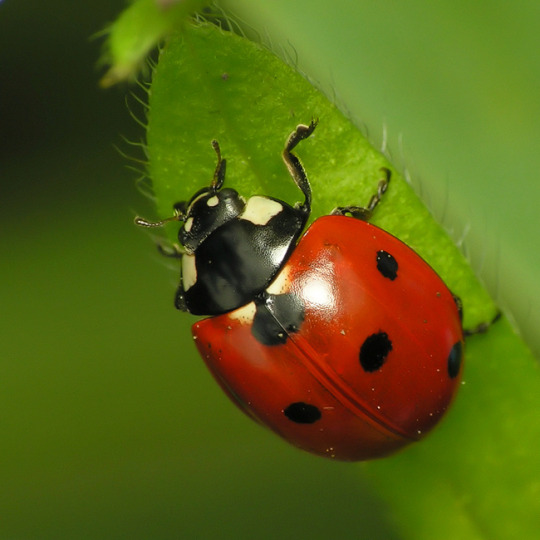
...horse: Suomenhevonen, Finnhorse, literally “horse of Finland”. It was, for a long time, the only horse breed in Finland. It’s apparently considered one of the fastest and most versatile coldblood breeds in the world. During WWII, the Finnish army did not have many cars, so suomenhevoset were very important back then. 7 200 horses died or went missing during the Winter War, and the horses that did survive had their minds as broken as the men they’d stayed beside. There are quite a few memorials for the horses, after all, they helped to carry the wounded when no other vehicle could. We owe them a lot.
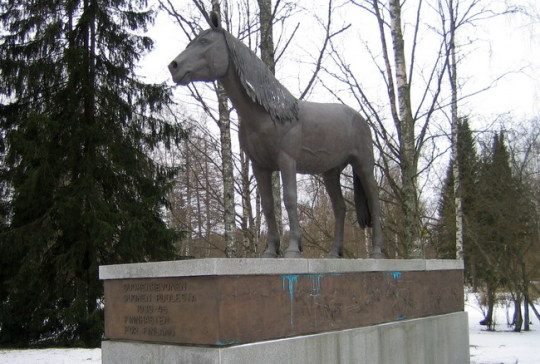
This is one of those memorials. It’s called Suomenhevonen - Sotahevonen, which means basically “the Finnhorse - a war horse”. (no relation to the movie)
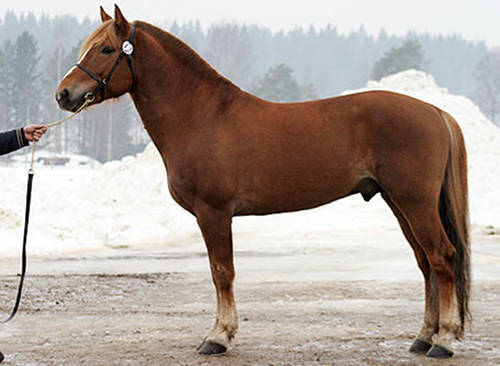

....dog: Suomenpystykorva, the Finnish Spitz, yes, we did need our national dog, who doesn’t??? Written mentions of a barking hunting dogs with red fur have survived from the end of the 19th century, but dogs very closely resembling the breed have been used for hunting in Finland for hundreds of years. (source)
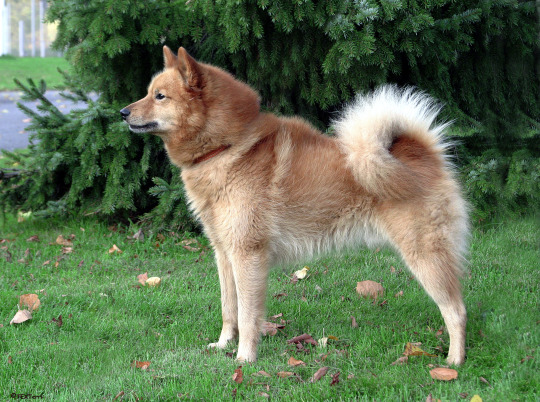
...tree: Rauduskoivu, silver birch. (picture by me)
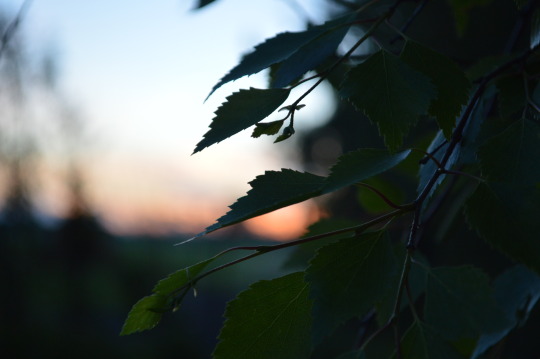
...flower: Kielo, Lily of the valley. (source)

...stone: Graniitti, granite. It’s the most common type of stone in Finland, and it’s been mined here even to be exported. For example, the pillars of Saint Isaac’s Cathedral in St. Petersburg were made of Finnish granite. And, of course, so was Finland’s Parliament House in Helsinki. There’s even a type of granite that has a Finnish name, rapakivi granite.

...poet: Johan Ludwig Runeberg (1804-1877). The words of our national anthem were made by him, and he wrote a collection of poems, called Vänrikki Stoolin tarinat, The Tales of Ensign Stål, an epic poem about the Finnish War of 1808-1809, a work of literature second to only Kalevala. He was already considered a great man (suurmies) before his death, and Runebergin päivä, Runeberg day, is celebrated on February 5th.
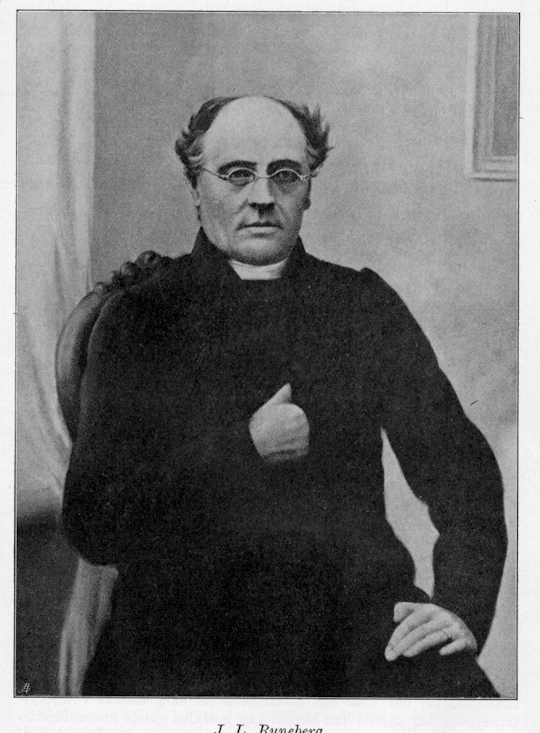
...composer: Jean Sibelius (1865-1957). Composed such little pieces as Finlandia (which was once suggested as the anthem for the whole world), the Karelia Suite, his seven symphonies, Valse triste, and many more. Finlandia is perhaps the best known out of all of them, especially the Finlandia Hymn. It is very beautiful, I agree. Here’s a link, go have a listen if you have time.
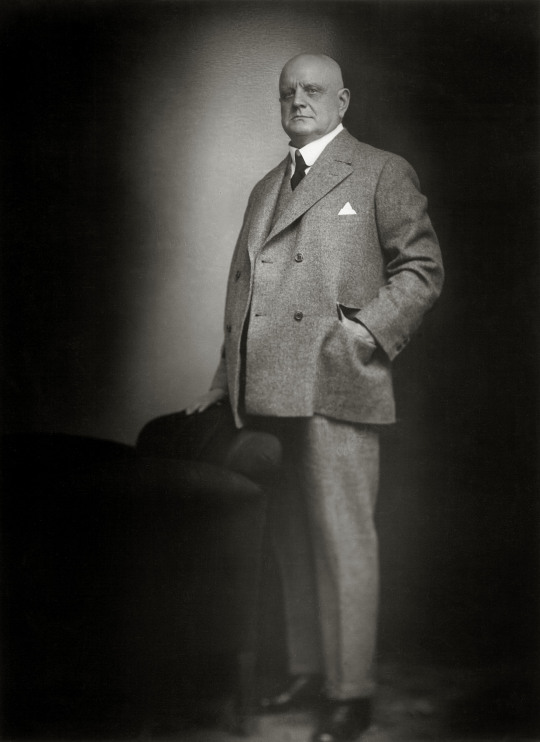
...author: Aleksis Kivi. He was the first professional Finnish author. He is the best known for his novel Seitsemän veljestä, Seven Brothers. He also wrote plays and poetry. Oh, yes, I should probably mention that this first professional Finnish author lived in 1834-1872. No, we haven’t been writing books here for very long. There are no photos of him, but there’s this drawing by Albert Edelfelt.
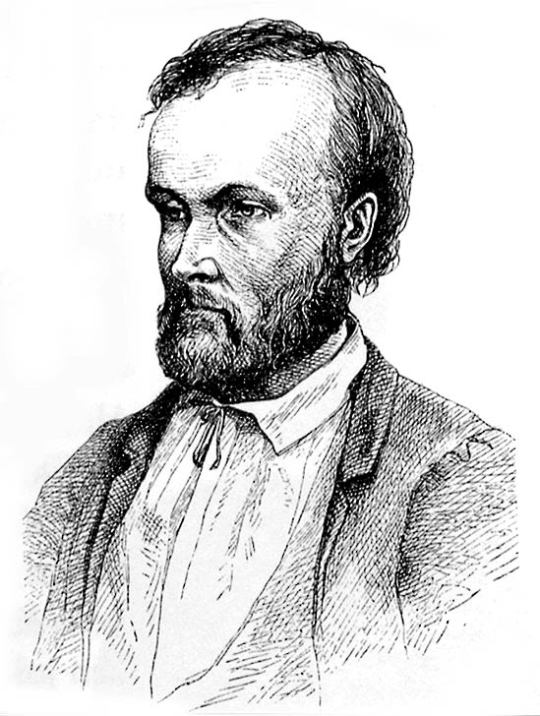
...saint: Piispa Henrik, or Henry, Bishop of Finland. He was murdered here in 1156. Maybe. He might’ve not existed, no one knows for sure.
...satu: See, the word “satu” technically means a fairytale, but some stories that are called a satu in Finnish don’t actually have that much magic stuff, you know? For example this one, that I swear I saw being called Finland’s national “fairytale”, but if it’s not, that’s fine, because it’s still a very well known tale in Finland. It’s called Koivu ja tähti, which means the Birch and the Star. It’s about two children, who were taken from their parents and from their home to Russia during the Russian occupation of Finland called “Isoviha”, or the Great Hatred. A lot of people died, okay, I’ll talk about it later in the history post. Anyway, the siblings, a boy and a girl, who want to return back home to Finland. However, the only thing they remember of their home is the big birch tree growing outside, and how a star always shone through the branches in the evening. They start making their way home, with only two birds leading their way, and after a year find their home and their parents, still alive. However, their two sisters had died while they were away, so the children realize that the two birds were actually the souls of their siblings leading them back home. This was based on the story of the author’s, Sakari Topelius’, great-grandfather Kristoffer Toppelius’ life, as he was taken to Russia as a slave, but after escaping and following the sunset he eventually found his way to Southern Finland.
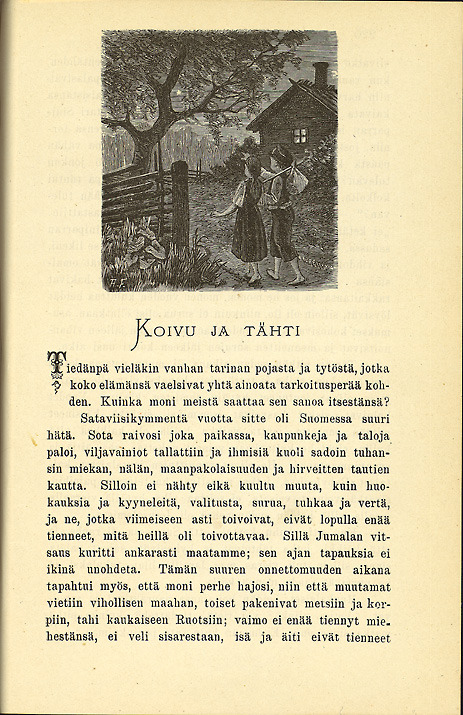
But yeah, that’s about it. In our brand new series (that I came up with while making this post), “Some basic stuff about Finland”, the next part will be about the years Finland was a part of Sweden! Material for tons of fanfics y’all
I hope you enjoyed the read! Sorry that it took so long!
#hetaliafandomdirectory#aph ambassador#aph finland#finland#hetalia#and if you think my posts are too long pls tell me#the amount of times i typo'd the word Finland while making this and the history parts is too big#kinda like when i made my essay on the russification of finland in 8th grade#though then it was with the Finnish names and like both Finland and Russia and i think Sweden a few times???#i really can't write#sorry if this has many mistakes it's nearing 2 am now and i am quite tired so i'll fix the mistaks in the morning#i would've gotten this out sooner but i spent the afternoon making karelian pies with my cousin and grandma#hohoo#it was fun#sorry for the rambling btw#but i do hope you like this!!!#I spent a lot of time on it#i know which posts ill do next btw#answer a couple of asks and make a couple of my own posts#the hardest part is writing because i keep getting distracted by research
135 notes
·
View notes
Text
Why Finnish is beautiful
My previous post was titled “Finnish is not a Germanic language. It is more beautiful than that.” I would like to explain why I think my mother tongue is so special.
Take a look at the simple words in that table. The Germanic words consist predominantly of single syllables of varying length, which makes the rhythm irregular. Many of the words have harsh sounds, like Stift (pronounced Schtifft), which stop the flow of air through the mouth.
In contrast, the Finnish words consist mostly of two or more short syllables, of regular length, with an even distribution of vowels and consonants. Finnish flows smoothly and rhythmically through the mouth.
Take the word snow for example. Is it one or two syllables long? Can you pronounce the sn gracefully? The Finnish word for snow is lumi, lu-mi, pronounced as in illumination. Would you prefer snow or lumi in metered verse?
Or take the word for horror in German: Schreck. It sounds like grandpa coughing up a blot of tar from his lungs. The Finnish word is kauhu, pronounced cow-who with a short who. It sounds ghastly in a poetic way, like the name of a forest spirit.
Even the ugliest Finnish words don’t sound so ugly. The word for snot is räkä, which is ugly only in the sense that it sounds like the croaking of magpies.
J. R. R. Tolkien invented the Elvish language Quenya to sound refined, and:
Tolkien took an interest in the Finnish mythology of the Kalevala, then became acquainted with the Finnish language, which he found to provide an aesthetically pleasing inspiration for his High-elven language. Many years later, he wrote: "It was like discovering a complete wine-cellar filled with bottles of an amazing wine of a kind and flavour never tasted before. It quite intoxicated me."
You may think that Finnish culture and language means getting drunk and shouting obscenities at a hockey game. There is some truth to that. But even the crudest obscenities flow rhythmically and would lend themselves to metered verse, and sound like they told about survival in arctic climate, of man’s perseverance under the rule and majesty of nature... because that is what it means to be Finnish. That is where the obscenities come from.
117 notes
·
View notes
Quote
I am wanting, I am thinking
To arise and go forth singing,
Sing my songs and say my sayings,
Hymns ancestral harmonizing,
Lore of kindred lyricking.
In my mouth the words are melting;
Utterances overflowing
To my tongue are hurrying,
Even against my teeth they burst.
-
Come good brother, little brother,
Pretty playmate of my childhood,
Start now with me for the singing
Sit together for the speaking,
Now that we have met together,
After separate pathways travelled;
Seldom do we come together,
Rarely do we have each other
In these ragged border regions,
These benighted northern marches.
-
Strike we now hand into hand,
Fingers into curve of fingers,
So that we may sing good songs,
Voice the best of all our legends
For the hearing of our loved ones,
Those who want to learn them from us,
Those among the rising young ones
Of the growing generation.
Magic verses we have gathered,
Kindled by the inspiration
From the belt of Vainamoinen,
Under forge of Ilmarinen,
Sword blade of the man far-minded,
Aim of Joukahainen's crossbow,
From the way-back fields of Northland,
From the heaths of Kalevala.
-
Long ago my father sang them
As he carved his ax's handle
And my mother also taught me
Though she kept her spindle spinning,
As I, milk-bearded mischief maker,
Clabber-mouthed and tiny tumbler,
Rolled about the floor before her:
Magic never failed the Sampo,
Louhi never lacked for spells;
Old in story grew the Sampo,
In her spells old Louhi vanished,
In his singing Vipunen,
Lemminkainen in his capers.
-
There are other words of magic,
Incantations I have learned,
Plucked in passing from the wayside,
Some I broke off from the heather,
Some I gathered from the bushes,
Others pulled from tender saplings,
Rubbed from haytips, snatched from hedges
Where I roamed about the cowpaths
As a youngster herding cattle,
Minding cows in cattle pastures
On honeyed hills and hillocks golden
By the side of spotted Frisky,
Trailing Muurikki, the black one.
-
Then the frost was singing verses,
Many a rhyme the rain recited,
Other poems the winds delivered,
On the seawaves songs came drifting,
Magic charms the birds have added
And the treetops incantations.
-
These I rolled up in a ball,
Made a fitting yarnball of them,
On my sled I put the yarnball,
On my sleigh I hauled it home
Right up to the threshing barn,
Hid it in a copper casket
On a shelf-end in the storehouse
Kalevala - Beginning words.
68 notes
·
View notes
Photo
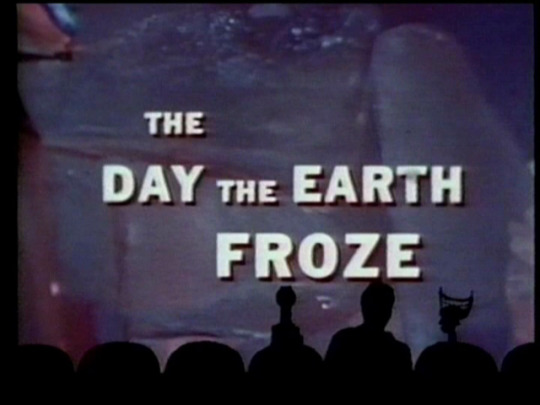
422: The Day the Earth Froze
The Kalevala is sort of the Iliad of Finland. As the opening narration of The Day the Earth Froze explains, in the middle of the 19th century a philologist named Elias Lönnrot compiled a collection of folklore and oral poetry into a single epic, which went on to become a major cornerstone of Finnish national identity. There's a Lemminkäinen Construction Group and a Sampo National Bank, towns called Kalevala and Pohjola, and things like Ilmarinen Streets all over the place. February 28th is Kalevala Day. It's a big damn deal.
Before I started this review, I did some thinking about whether I ought to read the poem before I tackled the movie. I ended up deciding against it for a couple of reasons. First, because a movie ought to stand on its own: part of its purpose is to bring the story to a new audience. If you can only understand the movie because you're already familiar with the source material, it has failed both as an adaptation and as a piece of art in its own right. I am therefore going into The Day the Earth Froze unspoiled by the poem, and will see what I can make of it.
Second, the Kalevala is fifty percent longer than the Iliad and would probably have taken me months to read. That was also a constributing factor.
The Day the Earth Froze is a fairy tale: a bunch of old guys in pajamas want Ilmarinen the blacksmith to build them a Sampo, a magical object that can produce gold, grain, and salt. It cannot be forged, however, without heavenly fire, which belongs to the witch Louhi (she keeps it in a cow skull for some reason). It just so happens that Louhi wants the Sampo for herself, so she kidnaps Ilmarinen's sister Annikki and refuses to let her go except in exchange for the Sampo. With no choice, Ilmarinen builds it, and then takes his sister home while her boyfriend, Lemminkäinen, goes back to destroy the Sampo. Louhi takes revenge by crashing Lemminkäinen and Annikki's wedding and stealing the Sun. The men of Kalevala must find a way to defeat her and force her to return it, or the world will come to an end in darkness and cold.
(If you're thinking that all the names in the movie sound like they came from the Silmarillion, that's because Tolkien loved the way Finnish sounded and used parts of its phonology and grammar as inspiration for the Elvish language Quenya. Also, you're a nerd.)
The original film, called simply Sampo, was ninety minutes long. Quite a bit of it was cut when they dubbed it into English as The Day the Earth Froze, and a little more chopped out by the MST3K people. In addition to the English version, I managed to find one in the original Finnish with rather sparse subtitles. I'm sure I missed a lot of the nuances of the dialogue that way, but I got to see the stuff that wasn't in the episode and boy howdy, some of it was weird.
For example, that bit of dialogue between Annikki and Lemminkäinen when they flirt a moment before his log floats away? Not in the original. I'm guessing AIP dubbed that in because they thought it was creepy that these two fall in love without ever even learning each other's names. In an unusual move for American International Pictures, they were right. It's even creepier when both parties run straight home to their families to rave about this pretty person they know absolutely nothing about.
Did you wonder how Lemminkäinen found out that Louhi had taken Annikki? I kinda did. Turns out it's because Annikki sent him a magical telegram made of hair, which gives him a vision causing him to shoot a taxidermied eagle with an arrow (I promise you, the scene is even stranger than you're imagining). This, unfortunately, raises a new question: did Louhi have a way of delivering her ransom demand, or was she counting on Annikki to pull some Disney Princess magic out of her ass? What if it hadn't occurred to Annikki to throw a lock of hair out the window? What if Ilmarinen and Lemminkäinen just concluded she fell out of her boat and got eaten by a shark or something? The extra material actually makes less sense.
Then there's the entire subplot they cut out, at least ten or fifteen minutes of movie in which Lemminkäinen gets his ass kicked by Louhi and his mom has to come to his rescue. See, after Lemminkäinen returns to Pohjola for the Sampo, the witch tricks him into dropping his sword (after failing to trick him into drinking a flagon of frogs) and then puts a snake down his shirt. He passes out from the venom, and the trolls throw his body off a cliff. Luckily the sun was watching – it informs our hero's mother of this, and she straight-up walks across the sea, no explanation whatsoever, commands the ocean to spit him back up, and walks home again carrying him like a tea tray!
Holy shit. Why didn't they send her to get the Sampo back? She could just walk in and put it in her fucking purse! What's going to stop a woman who can give orders to the sea?
Once Le Mom Käinen gets her son's corpse back to Kalevala, the Tree and the Road who refused to help her earlier take pity and give her magical sap and dirt to bring him back to life. So after all that, how does he thank her for bringing all her awe-inspiring superpowers to bear in saving his life? Why, he goes right out and does the thing that got him killed again, returning to Pohjola to destroy the Sampo! I hope she grounded him.
Like The Magic Voyage of Sinbad, The Day the Earth Froze was directed by Aleksandr Ptushko, and it's interesting to compare the two films. The Day the Earth Froze has less of the distinctly operatic feel that was such a part of Magic Voyage, but it is not completely absent. There's very little of it, to be sure, in the opening sequences, which are shot in the countryside with an emphasis on the great outdoors as a sort of rural paradise. We see thick woods, rushing rivers, herds of goats, and get an idea of a rustic but prosperous community. Something similar happens at Annikki and Lemminkäinen's wedding: dancing outdoors and crowds of extras for a more naturalistic feel.
This contrasts with the way things are depicted in Pohjola, where Louhi and her trolls make their home. Here the sets look more like sets, and there is a greater use of painted backdrops – when Joel and the bots describe the field of snakes as 'an El Greco', they've got the right idea. The Land of Kalevala is supposed to be a version of the real world. It is romanticized and idealized, but the audience ought to be able to imagine themselves going about an ordinary life within in, complete with the hard work necessary to a pastoral existence. It is important that all three of the main characters are introduced while doing work: Lemminkäinen is cutting wood, Annikki is doing laundry, and Ilmarinen is working in his forge.
Pohjola, on the other hand, is part of a fantasy, a land of witches and trolls, and looks correspondingly less real. This extends for the most part to the actions of the characters. Ilmarinen could not build the Sampo in Kalevala, because it required something (the heavenly fire) only available in the fantasy land of Pohjola. In Kalevala, Ilmarinen and Lemminkäinen must chop a boat out of a tree. In Pohjola, they are able to forge one in the same fire Ilmarinen already used to make a horse! And the fantastic Sampo cannot be brought back to the real world of Kalevala in its magical form. All Lemminkäinen can bring back is a piece of it, which will bring undefined 'good luck' instead of material gold or grain. When Ilmarinen tries, in Kalevala, to forge a new sun to replace the one Louhi took away, he is told he cannot succeed.
Perhaps this is another reason why the sequence with Lemminkäinen's mom was cut out for the American audience – it is a departure into the purely fantastical, and jars with the otherwise more realistic portrayal of Kalevala. It also doesn't really affect the plot at all, as illustrated by how easily it is excised in a chunk and how nothing seems to be missing from the narrative as a result. I presume it was in the movie because it was in the poem, but it doesn't do much. Imagine the Lord of the Rings movies had included the sequence with Tom Bombadil. Yeah, it would have been nice for the fans to see, but it doesn't give us anything that recurs in the story, it would have killed the rising tension, and those unfamiliar with the books would have been left sitting there wondering what the hell they just watched. Annikki's hair telegram does foreshadow the existence of some mild magic in the 'real' world, but the feats of Le Mom Käinen are way beyond that.
The effects used to present these real and unreal worlds are often quite good. Louhi's cloak sailing along on the wind looks very creepy and purposeful. The only time it's really silly is when Lemminkäinen fights it off. The chained-up winds are quite (pardon me) atmospheric, dangling ominously from the cave ceiling as they do – I like that the North Wind's bag is covered in icicles. The burning horse looks just unearthly enough and the Sampo doesn't look like anything in particular, which helps it remain a little mysterious even when it's right there grinding out gold. The matte paintings that represent Kalevala buried in snow are a little unreal-looking themselves, but perhaps they represent the fantasy world of Pohjola intruding into the real one of Kalevala, where it can do nothing but harm.
As weird as the movie is, I really did enjoy The Day the Earth Froze, and I'm actually kind of looking forward to watching The Sword and the Dragon now. You guys can also expect to see Aleksandr Ptushko in the Episodes that Never Were section sometime, not because his films are bad but because I really want to see more of them.
36 notes
·
View notes
Text
Saari residency photo diary
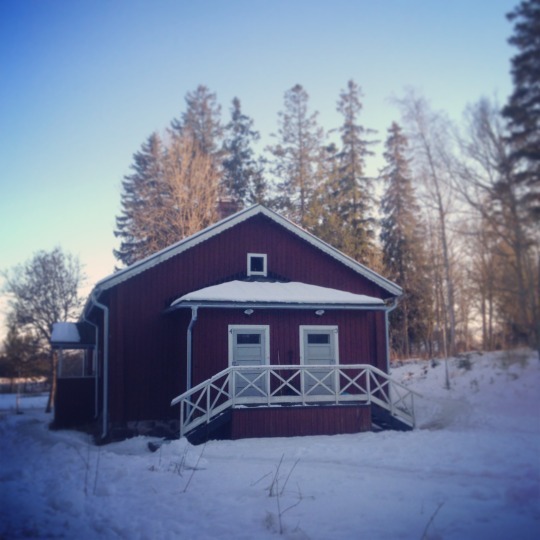
1 March 2016: home for the next two months
A photo diary documenting my Saari Residency, in Finland, March/April 2016, beginning research and development for a new project exploring the evolution – and construction – of Finnish identity within forest-lore, at the heart of which, I intend to create a composition for voice and musical saw, composed from fragments of Finnish forest-related songs.
Thanks to Hanna Nurminen, Iiris Lahti, Pirre Naukkarinen and Kone Foundation for the opportunity and support; Leena Paaskoski and Reetta Karhunkorva for access to the incredible collection of lumberjack song-manuscripts at the Lusto Forest Museum; Risto Blomster for guiding me through the extensive song recording archives at the Finnish Literature Society, Helsinki; Markku Nieminen and Ville Nyman at Juminkeko centre for Kalevala and Karelian culture for the recordings; the Alajärvi family for your hospitality and kindness; and my fellow artists-in-residence for your good company.

2 March 2016: studio for the next two months

2 March 2016: heating up the sauna
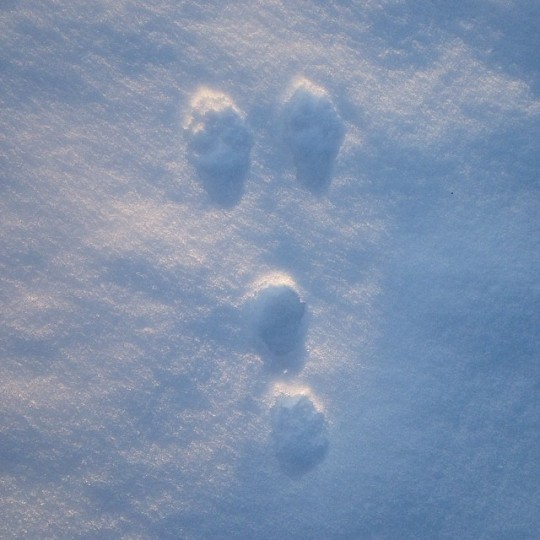
4 March 2016: here hare
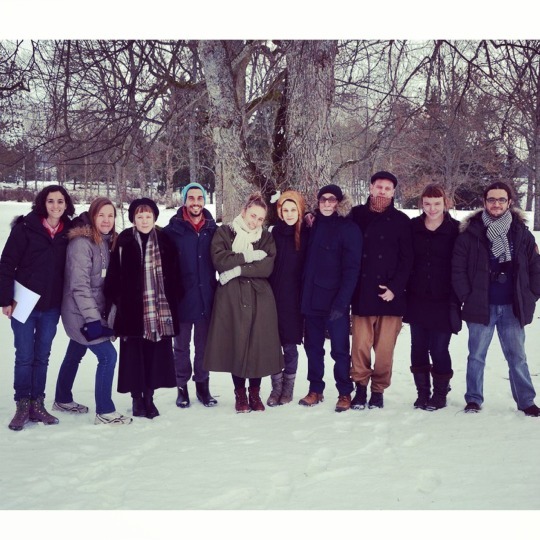
5 March 2016: Slowly settling into life at 'saari', in residence with this lovely group of artists, writers, dancers & composers.
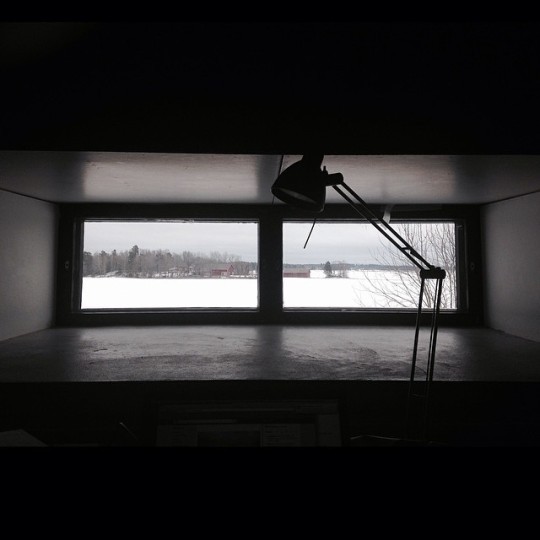
6 March 2016: the view from my desk
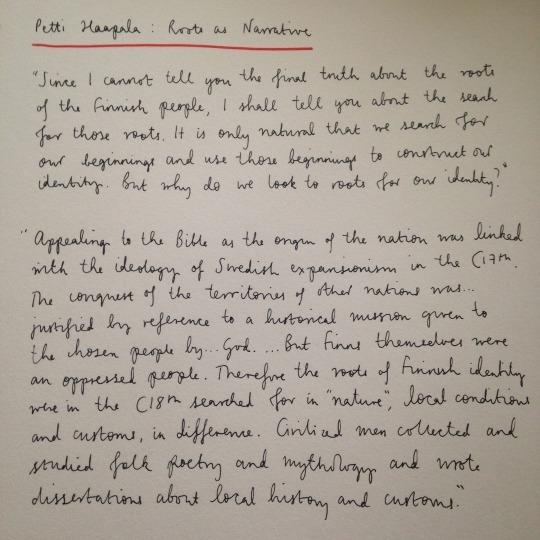
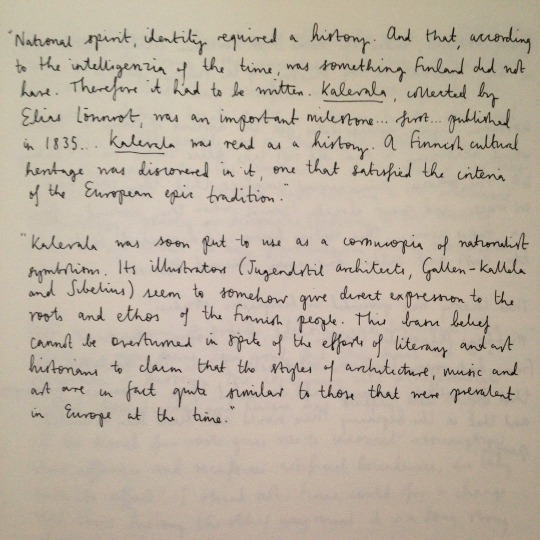

notebook extracts: roots as narrative, framework: the Finnish art review
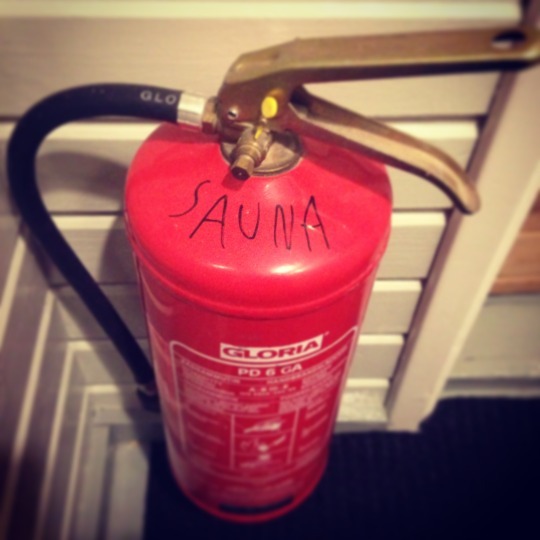
7 March 2016: safety precautions
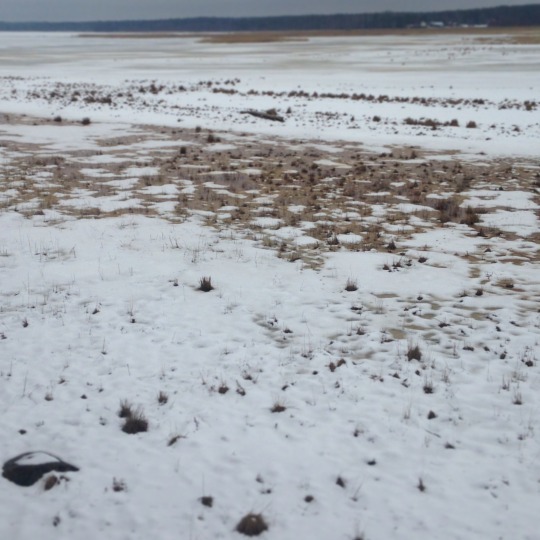
9 March 2016: the shore marsh meadow, beginning to thaw, waits for the birds
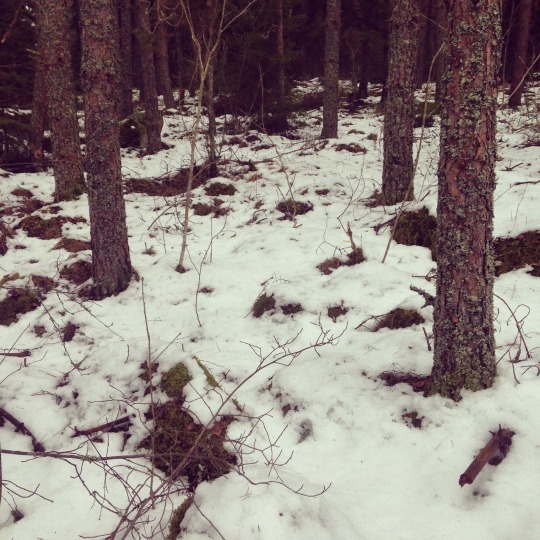
9 March 2016: This morning, while walking in the forest, I called out to the raven and he replied! He told me that spring will come soon. Listen to our conversation here

10 March 2016: a new moon outline to be completed at full moon (lintutorni, mietoistenlahti)
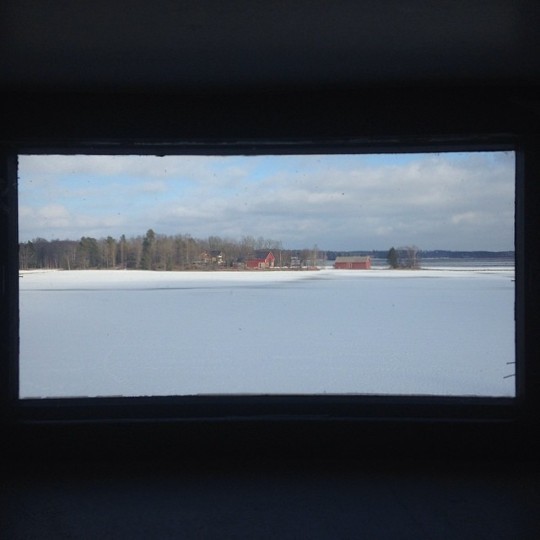
10 March 2016: The great thaw has begun. Is this a lake or a field? All will be revealed soon...
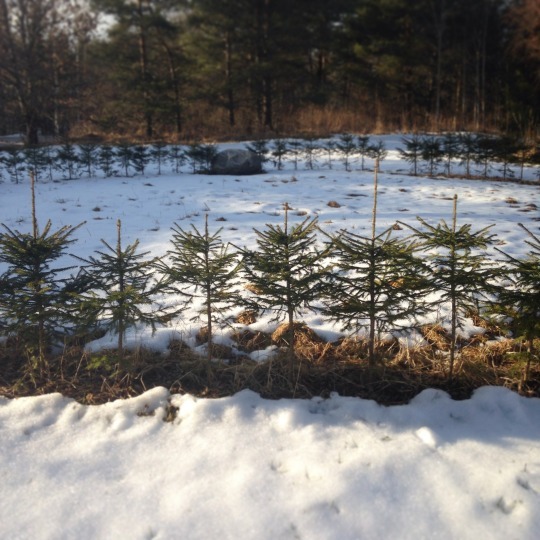
11 March 2016: Gerry Loose's tree circle sanctuary in the spring sunshine at Saari residence
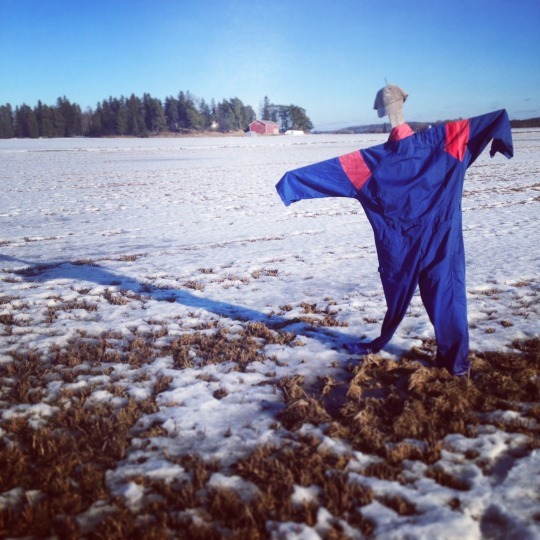
12 March 2016: last season's scarecrow


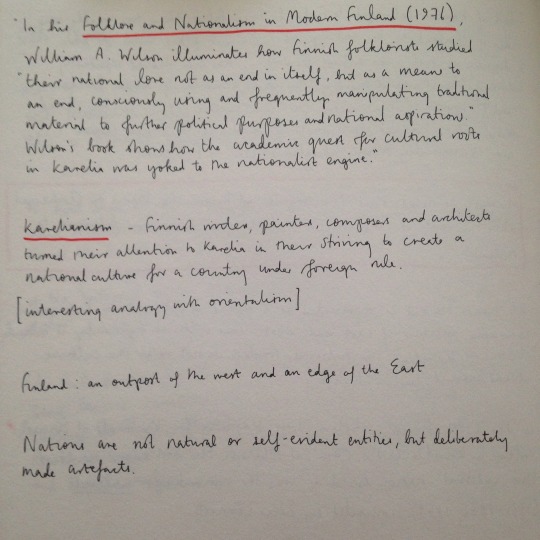
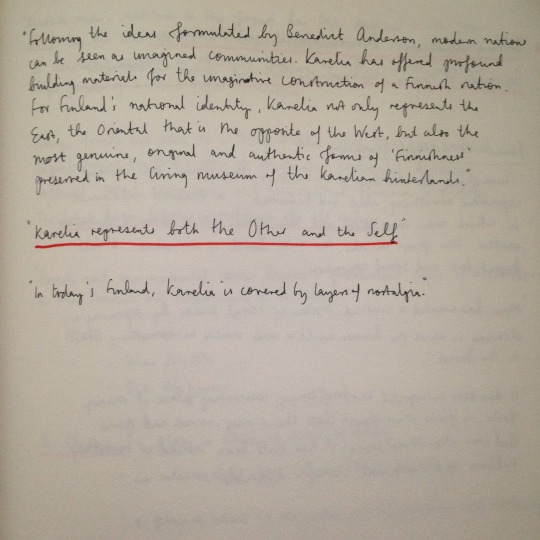
notebook extracts: the question of karelia – framework: the Finnish art review
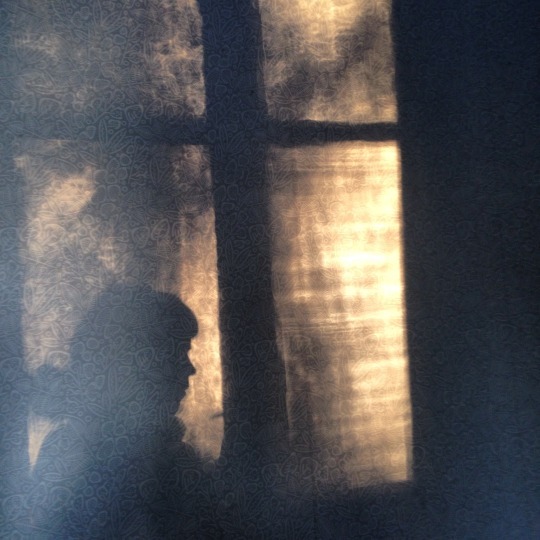
13 March 2016: shadow on wallpaper
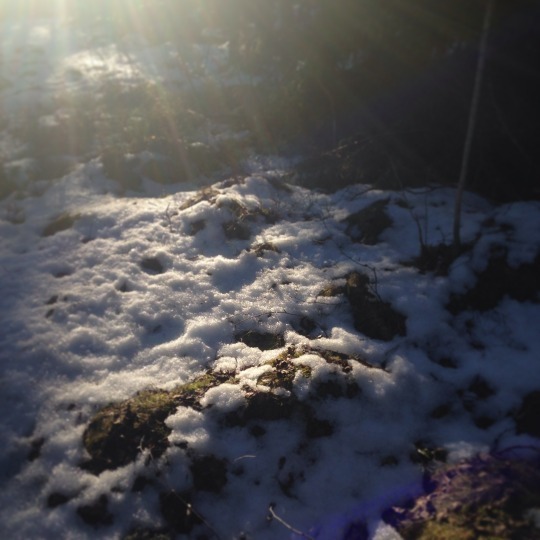
13 March 2016: every day more green is revealed
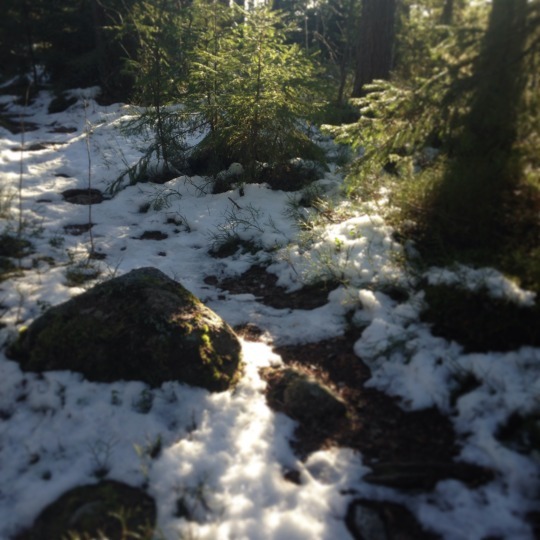
14 March 2016: emerging green

15 March 2016: receding white

15 March 2016: Packing my bags and heading east tomorrow for a few days, to visit Lusto Metsämuseo (Lusto Forest Museum). I will be researching finnish forest-related songs in their archive. Here is a pic from their photo collection
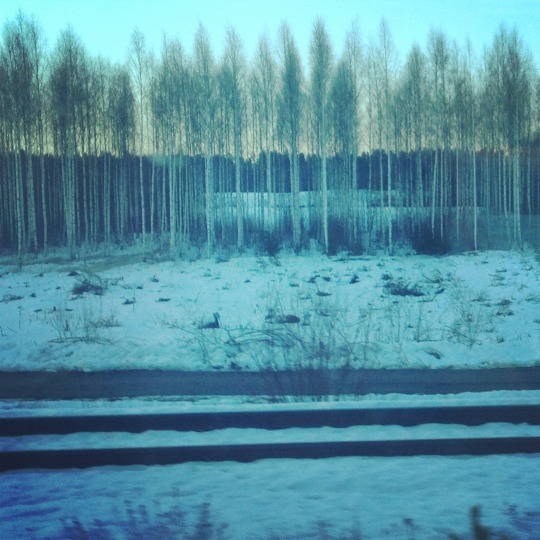
16 March 2016: straight lines, from the train across the country

16 March 2016: notebook extract – forest is perceived as wilderness but in reality is production landscape

16 March 2016: Borderlands: passing through South Karelia on the train. It is pitch black outside so I can't see a thing. But I know that to my left is Finland and to my right is Russia. One day I'd like to cross this border...
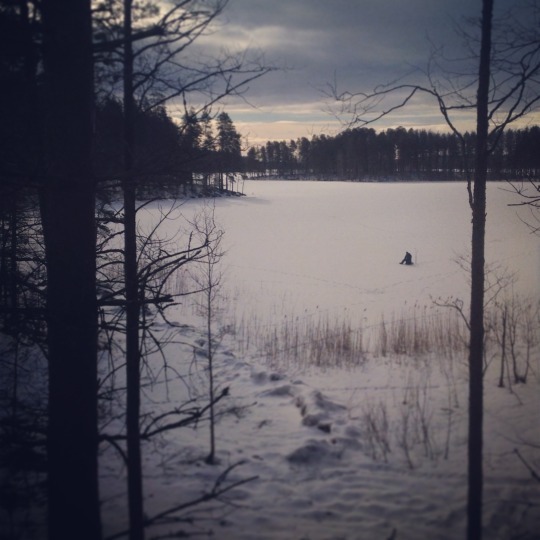
17 March 2016: It is still winter in the east. A man fishing on the ice.
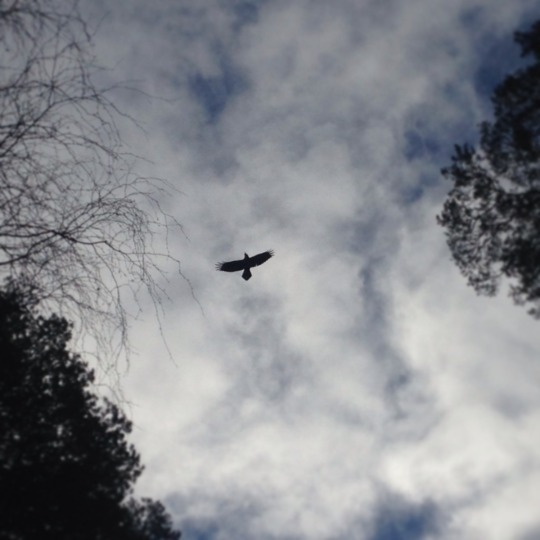
17 March 2016: Just had a wee chat with this guy. Here he is mid call, flying over my head. The sound of his wings sent shivers down my spine.
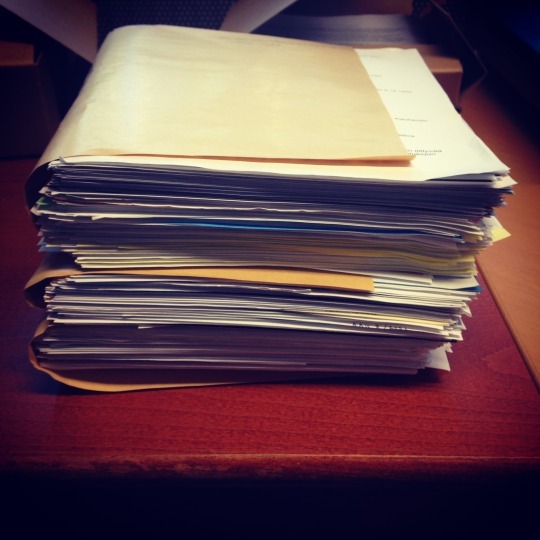
18 March 2016: In the archive of Lusto forest museum, this huge pile of manuscripts contains hundreds of forest-related and lumberjack songs... I certainly have my work cut out for me!
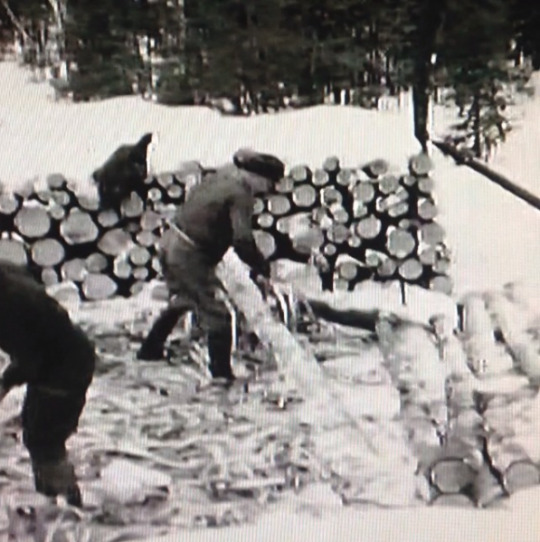
18 March 2016: Lusto Forest Museum Archive film – peeling the bark from felled tree logs, in preparation for floating the timber. Watch here
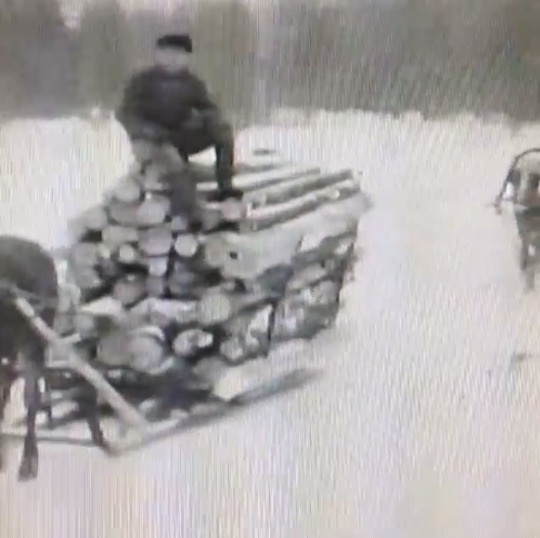
18 March 2016: Lusto Forest Museum Archive film – transporting logs across land. Watch here.
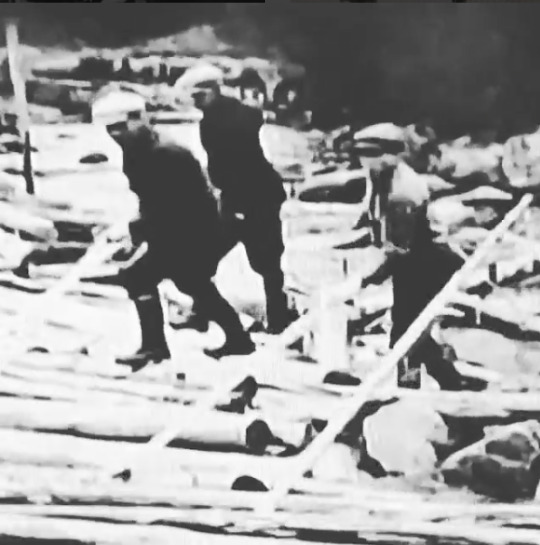
18 March 2016: Lusto Forest Museum Archive film – floating the logs. Watch here

18 March 2016: sunshine through the pine
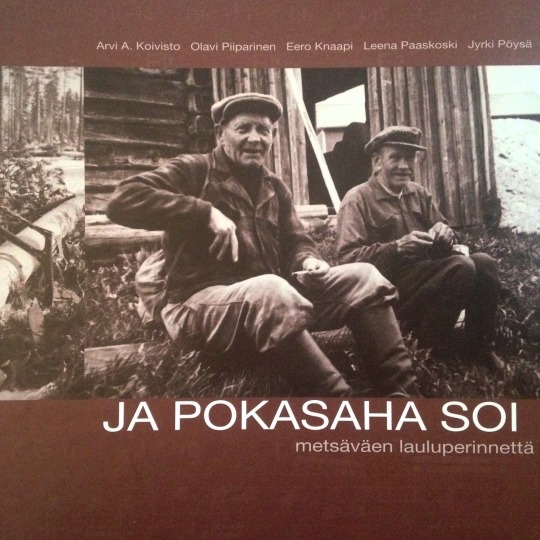
Lusto Forest Museum have published a collection of lumberjack and forest work songs, along with archive photographs, in this beautiful book.
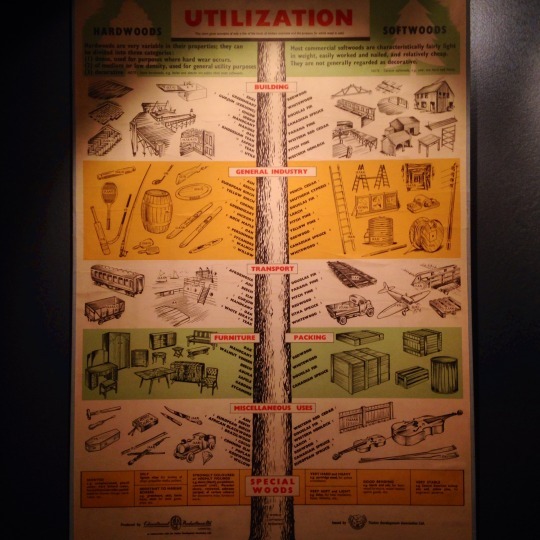
19 March 2016: a diagram showing the various ways humans utilise trees. (lusto forest museum)

19 March 2016: A forester's portable cabin, a space for rest, food and sleep. (lusto forest museum)
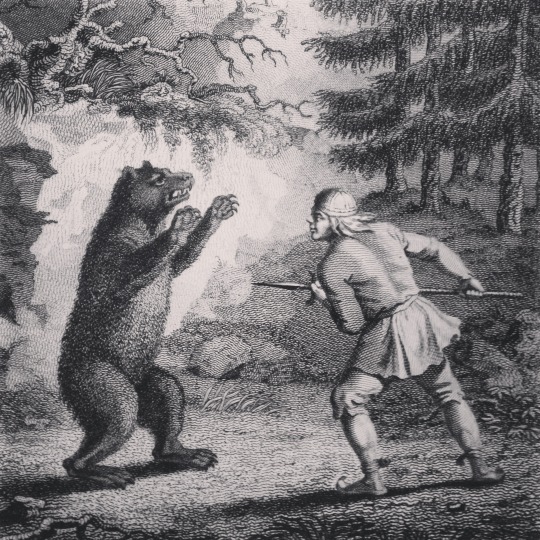
19 March: Seventeenth century engraving – a Finn hunting a bear (lusto forest museum)


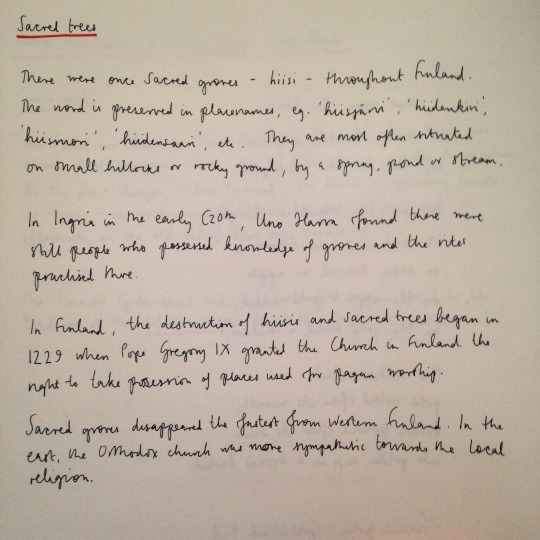
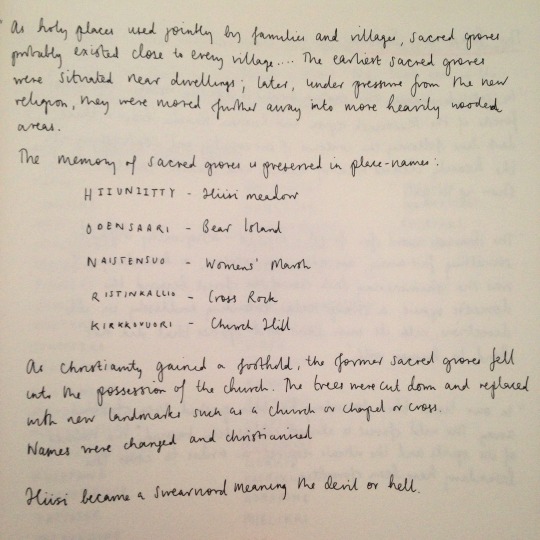
notebook extracts: from Tree People, Ritva Kovalainen and Sanni Seppo – tree of life / sacred trees
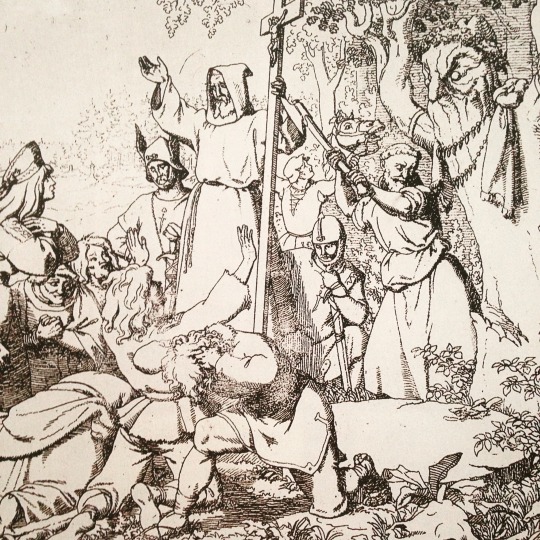
German priests felling sacred trees of Estonia, 19th century drawing based on a 13th century story

notebook extract: forest spirits
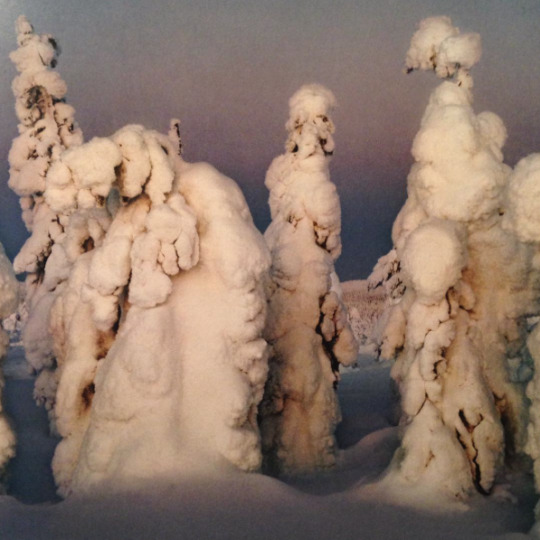
Trees that look like people wrapped in blankets. Photo is by Ritva Kovalainen & Sanni Seppo.
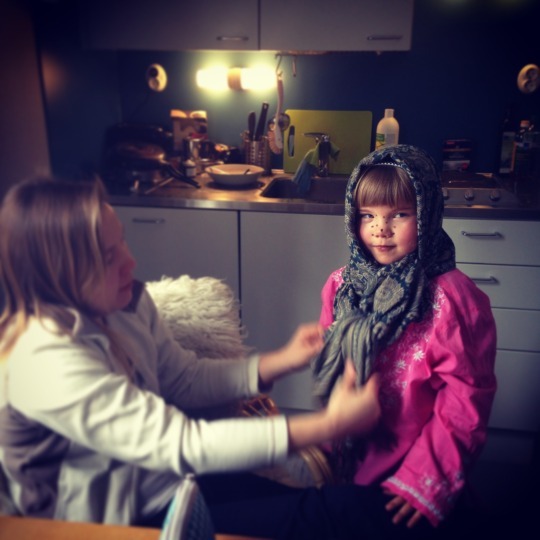
20 March 2016: This wee lassie is getting ready for Virpominen - a folk tradition on Palm Sunday, where children dress as witches, carrying decorated willow branches door-to-door, reciting spring blessings, receiving chocolate eggs in return...
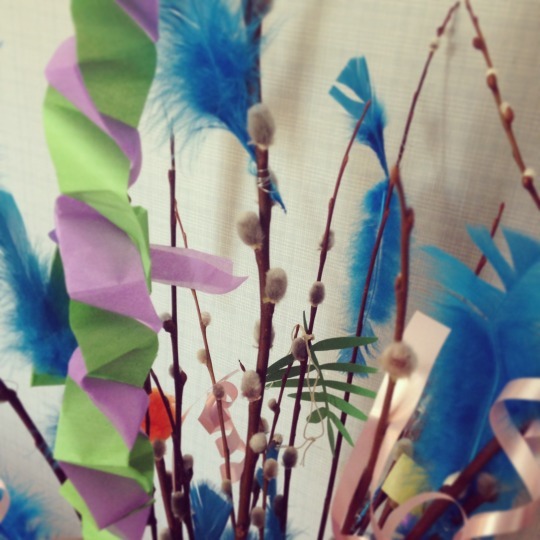
20 March 2016: Virvon, varvon, tuoreeks terveeks, tulevaks vuodeks; vitsa sulle, palkka mulle! / Here I go a-waving willow, wishing you a healthy green year; here's a willow wand for you, now a treat for me!
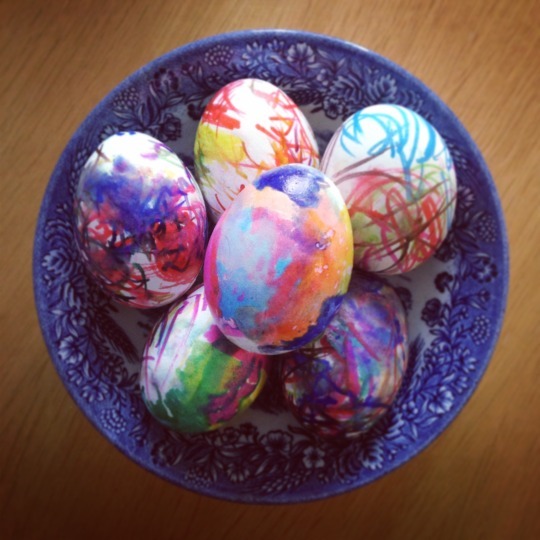
20 March 2016: a five year old artist's decorated eggs
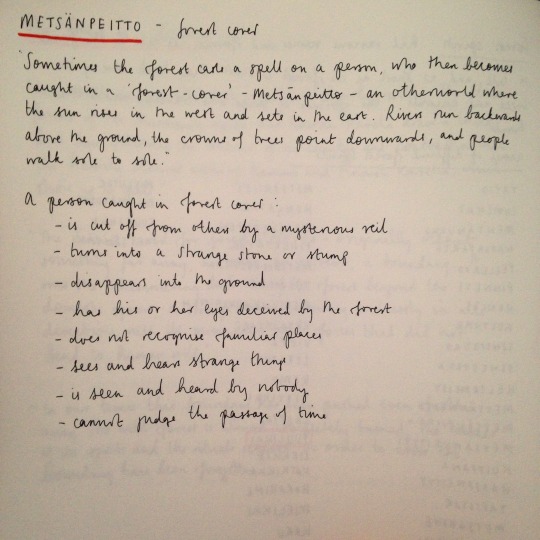
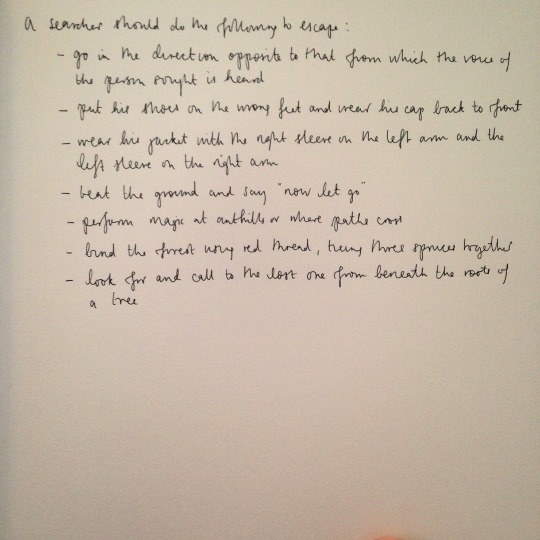
notebook extracts: forest cover, from Tree People
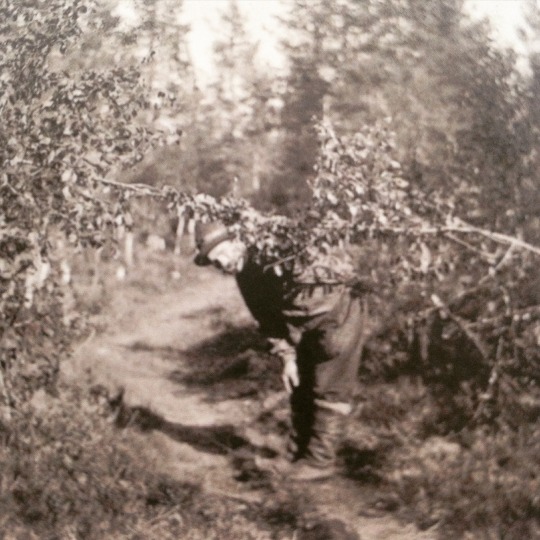
Antti Lohilahti has taken the forest prisoner and is calling the cows out of forest cover, 1917
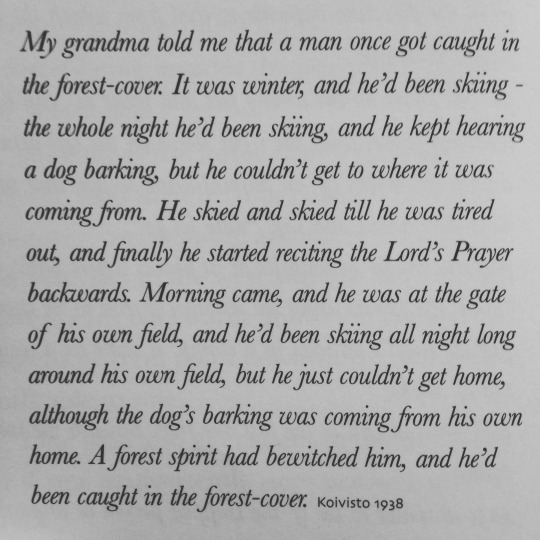
from Tree People
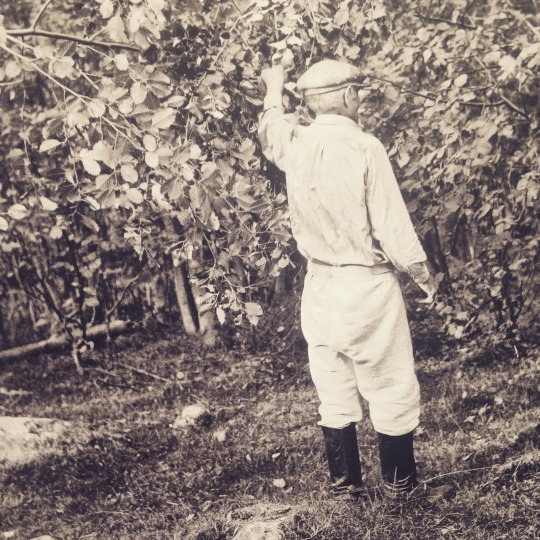
Binding the forest to escape forest cover, 1955
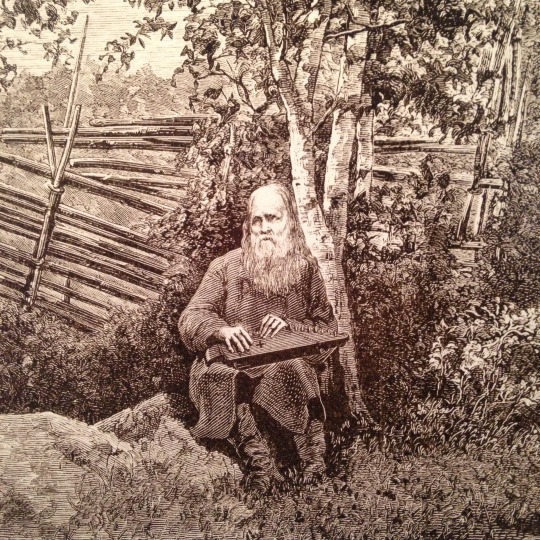
20 March 2016: Kantele player in Ilomantsi, Karelia - as depicted in a drawing by Gustaf Retzius from 1878
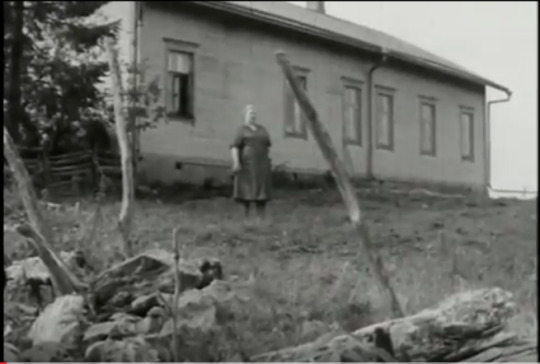
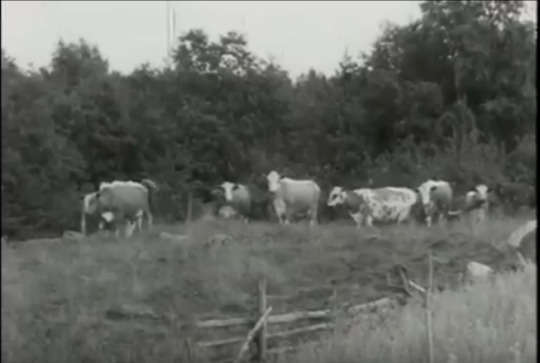
karjan kutsuhuuto – Cow calling song, from Savo, the area in Finland where my mother is from. Calling the cows in from the forest. Link to extract of film here. Complete film here.

Mum's family on both her mother's and father's sides were farmers. Here is my Mummo (Finnish for Grandma) milking a cow and my mum and aunt in the background. Mum remembers her aunt calling the cows in from the forest, and the sound of their cowbells.
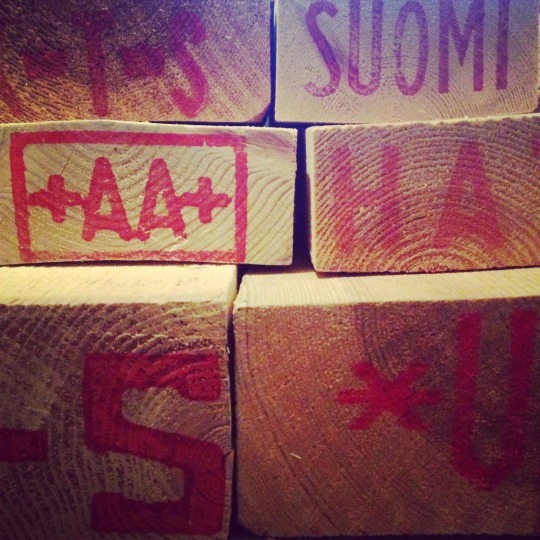
20 March 2016: Various Finnish company stamps, marking sawmill timber Lusto Forest Museum)
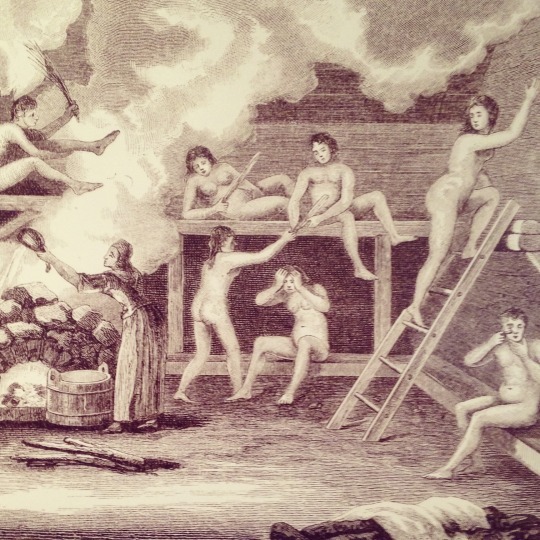
21 March 2016: sauna

22 March 2016: A basket of rye grass (rairuoho) beginning to grow, brings springtime into the house.
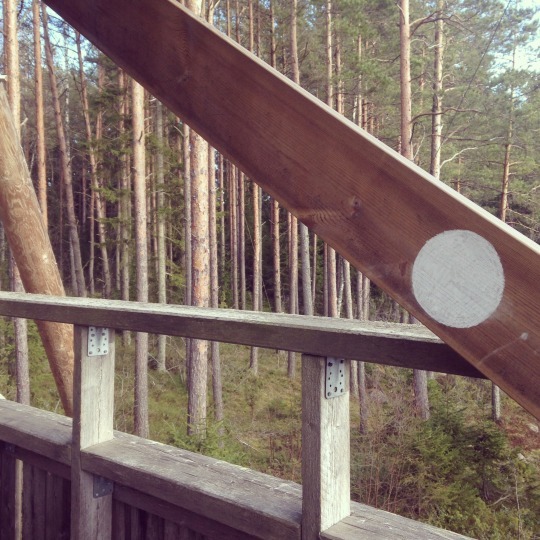
23 March 2016: filling in the chalk moon at full moon (lintutorni, mietoistenlahti)
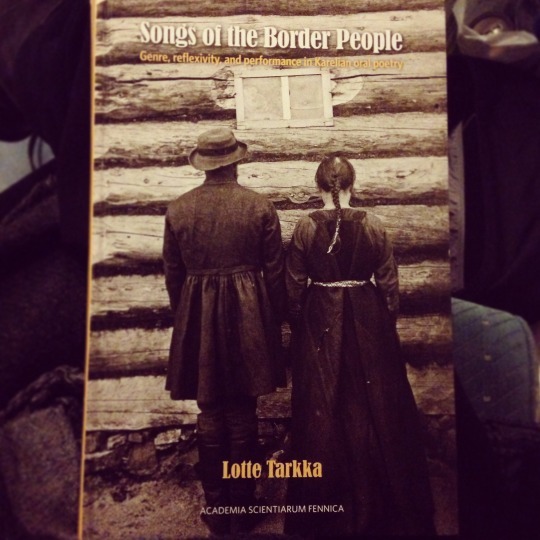
25 March 2016: Reading Material – On the train north to visit my kin, getting stuck into this crackin' book on Karelian oral poetry...
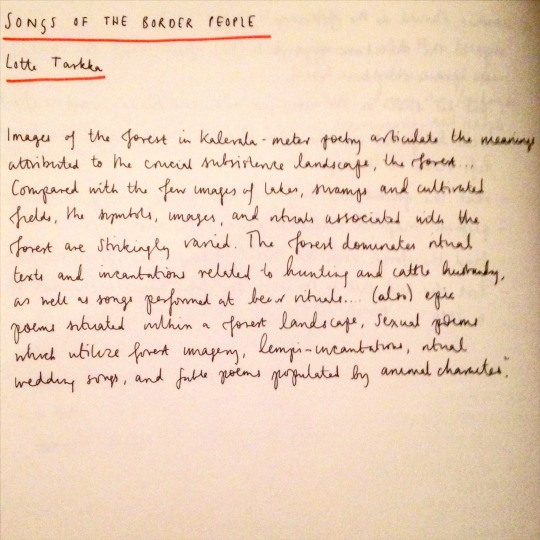
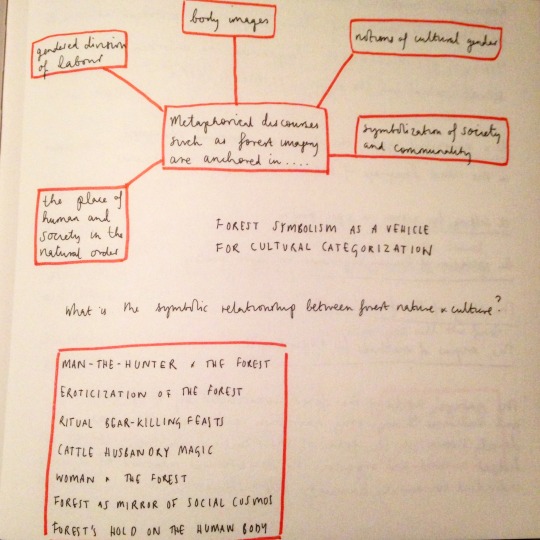
notebook extracts
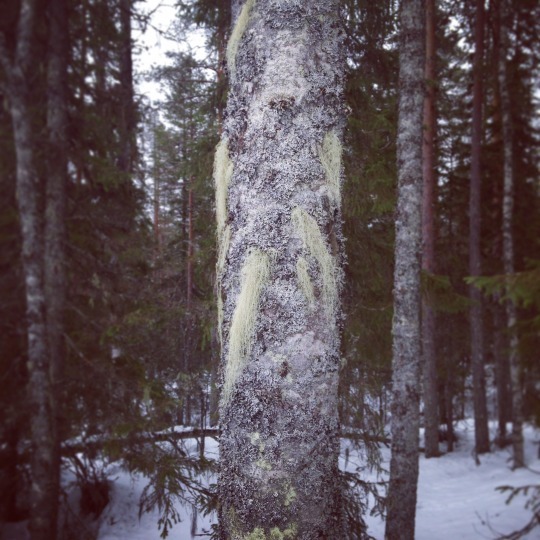
26 March 2016: Naava (old man's beard)
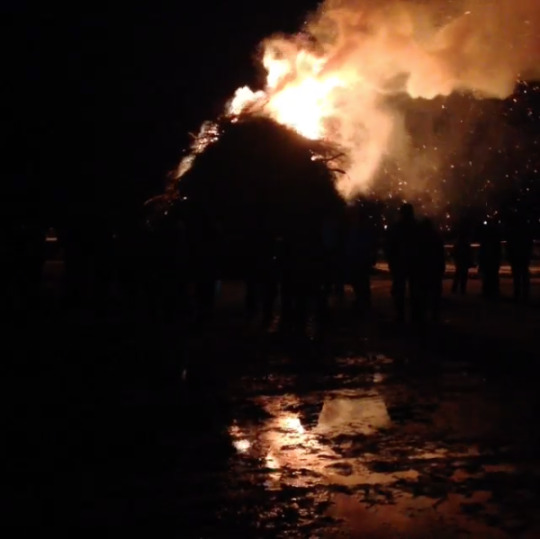
26 March 2016: Kokko Oulujärvilä (bonfire on the oulu-lake) - a fire festival on the ice to bring in the spring (near Kajaani)

27 March: In Iisalmi, slightly dewy-eyed after lighting a candle and laying flowers at my mummo's grave (my grandmother) alongside my ukki (grandfather) and setä (uncle) who both died before I was born.
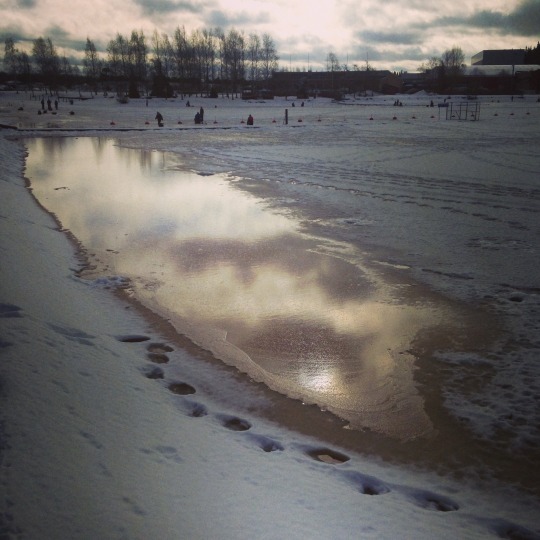
27 March 2016: In iisalmi watching people fishing in the ice, at Poro Selka (reindeer's back) as the ice begins to melt.
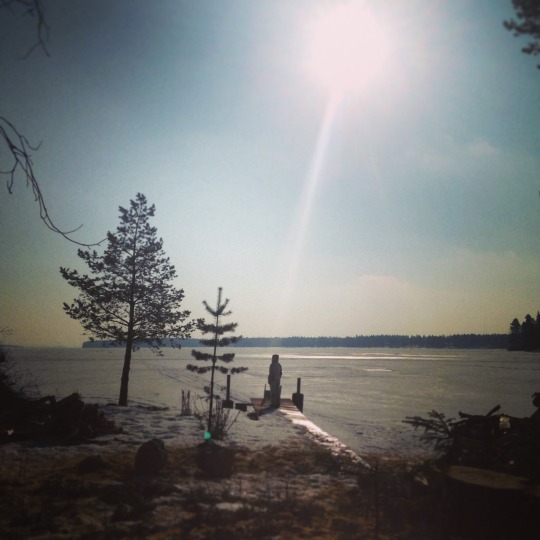
28 March 2016: morning light in Kajaani

28 March 2016: Ahma juoksi takkarannassa järven jäällä!!! Just now a wolverine ran close to the houses at takkarantta! I missed seeing him/her close up, but here are the tracks.

28 March 2016: joutsenen siipi - whooper swan's wing
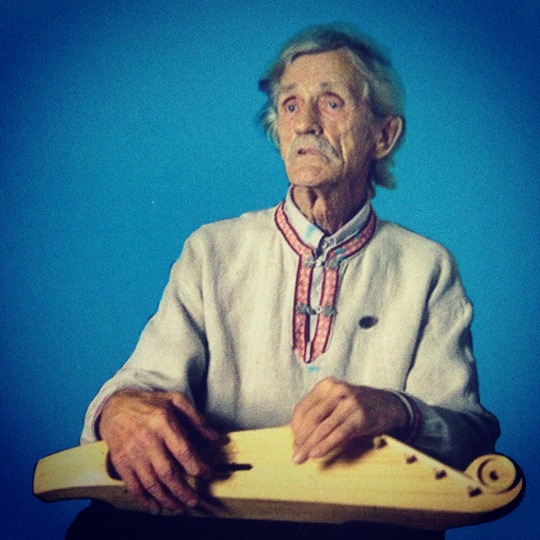
29 March 2016: Just had an amazing afternoon at Juminkeko - a centre for Karelian traditional culture and the Kalevala - based in Kuhmo, Kainu. I was gifted with wonderful recordings from their sound archive. Jussi Huovinen (pictured here) is the last living runo singer in Viena Karelia.
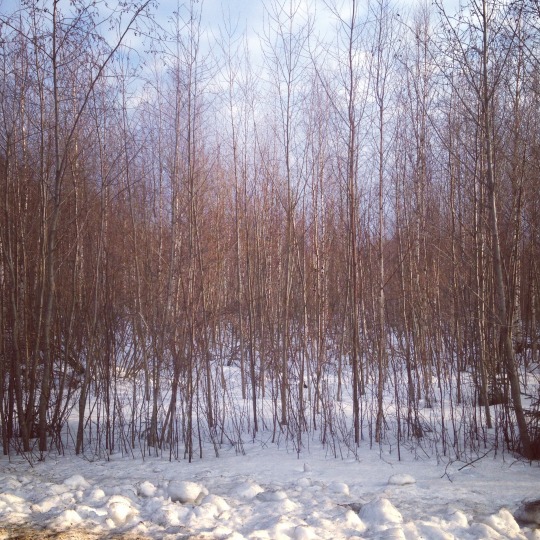
30 March 2016: leppä - alder
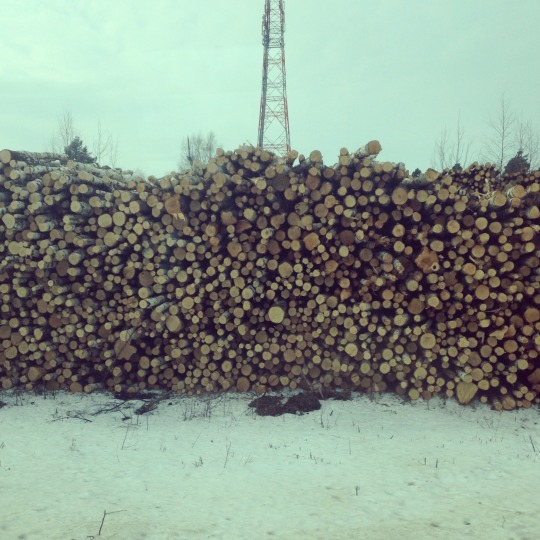
30 March 2016: birch timber
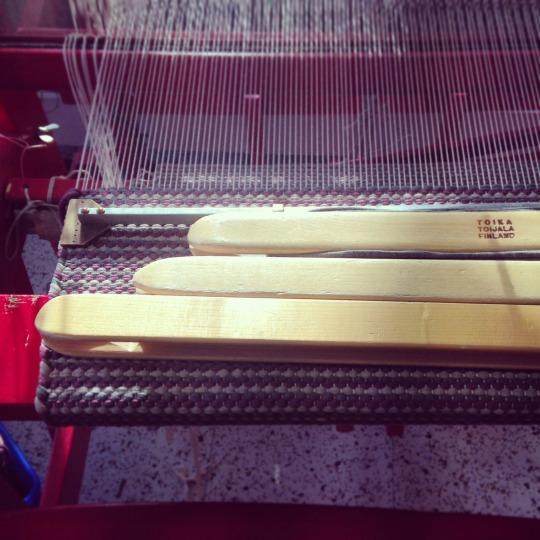
30 March 2016: loom
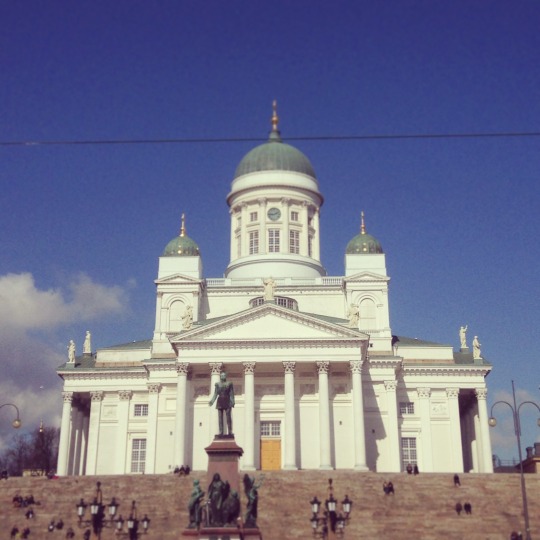
31 March 2016: Arrived in Helsinki, to visit the sound archives at the Finnish Literature Society in Helsinki
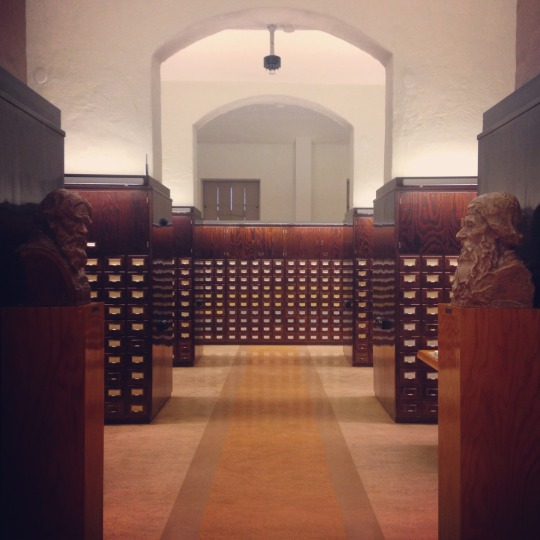
31 March 2016: Inside archive heaven at the Finnish Literature Society in Helsinki
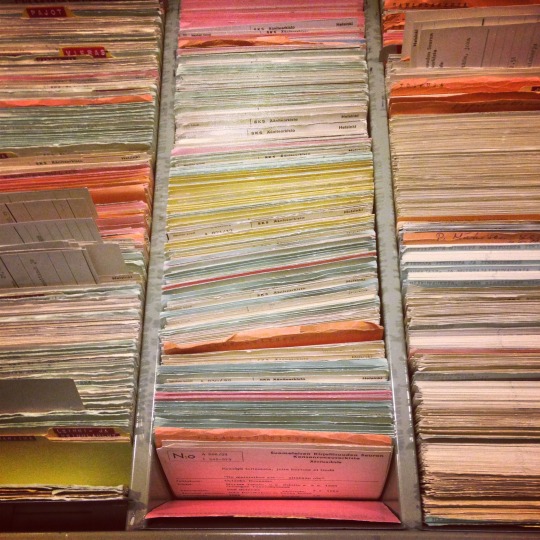
1 April 2016: Song hunting in the sound archive at the Finnish Literature Society
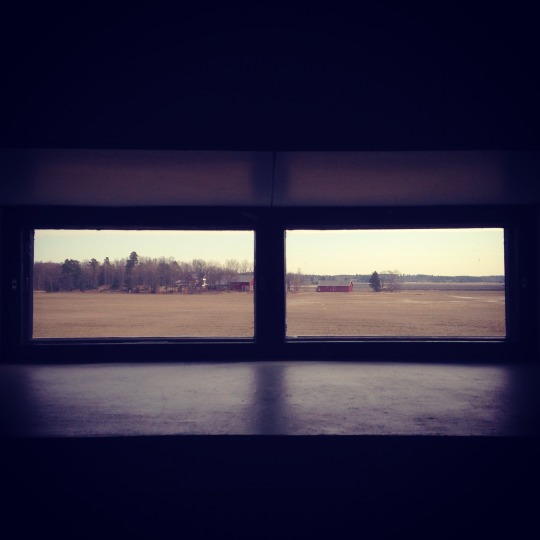
4 April 2016: Remember this view? Turned out to be a field.
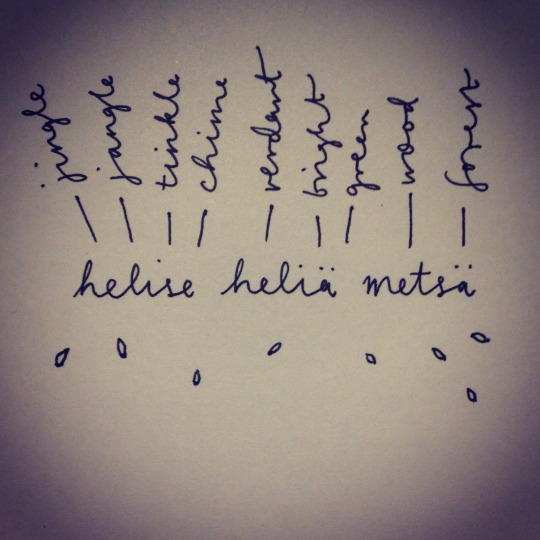
4 April 2016: Beginning to play and compose with fragments of Finnish forest-related songs

5 April 2016: Nain iloiten vain ma laulelen (just like this I sing rejoicing):
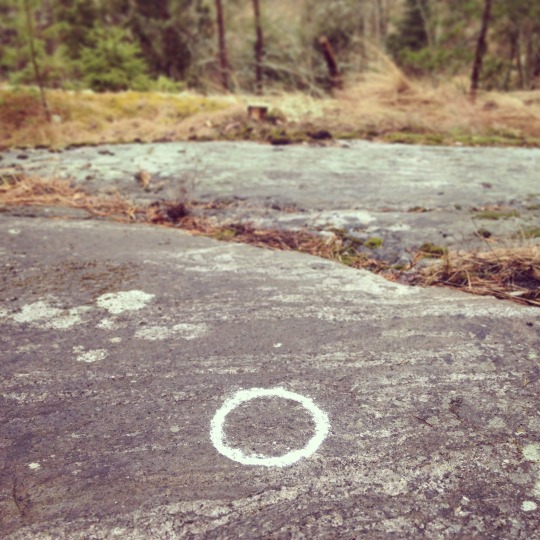
7 April 2016: a new moon outline to be completed at full moon (mietoistenlahti)
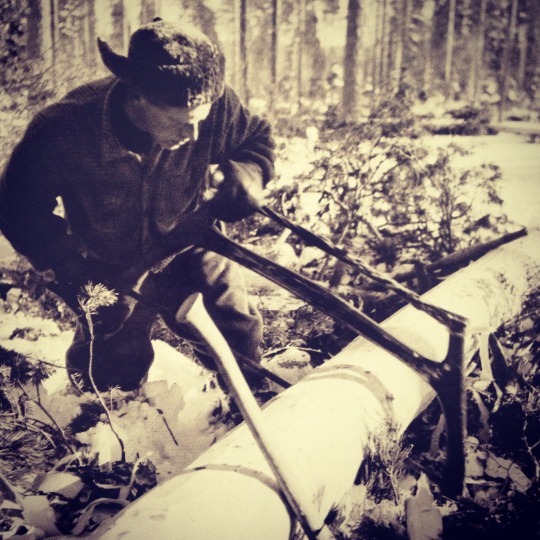
7 April 2016: Another name for pokasaha (frame saw) is nälkäviulu (hunger violin). The photo was taken in the 1950s and is from the Lusto forest museum archive.
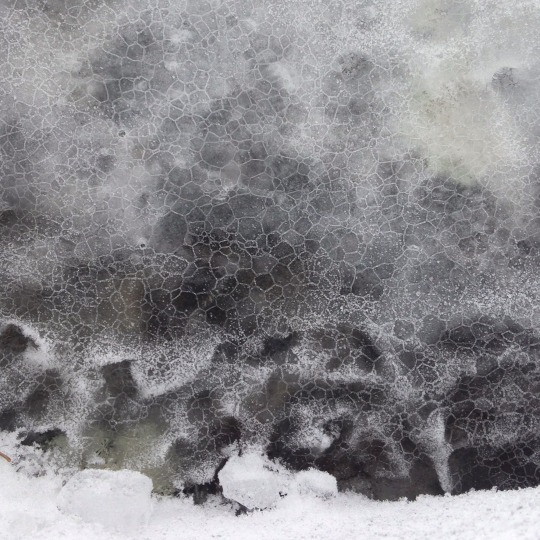
7 April 2016: ice formed in the curve of a boulder

12 April 2016: "I roamed the great forests as a wolf, magnificent wildwoods as a bear" - song fragment collected in 1906, in Soikkola, a former village in Ingria

Karelian Embroidery

15 April 2016: last night's sunset glow
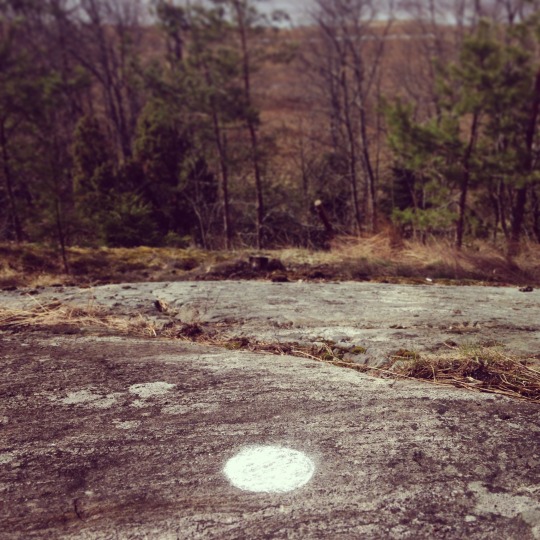
22 April 2016: filling in the chalk moon at full moon (mietoistenlahti)
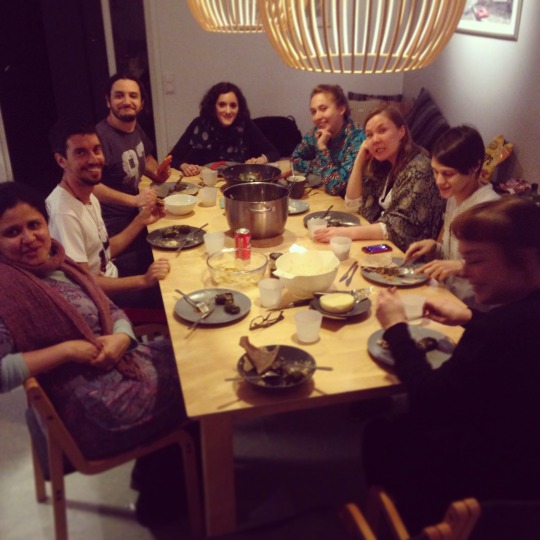
23 April 2016: artists-and-writers-in-residence
0 notes